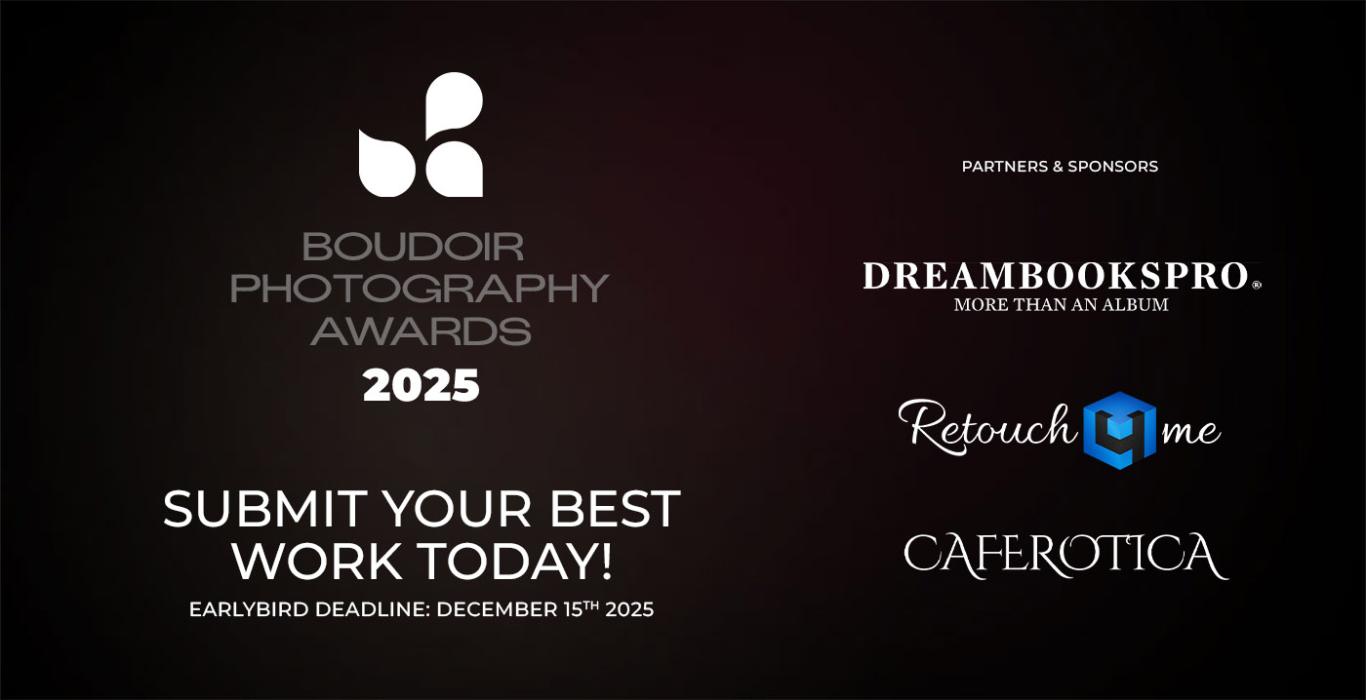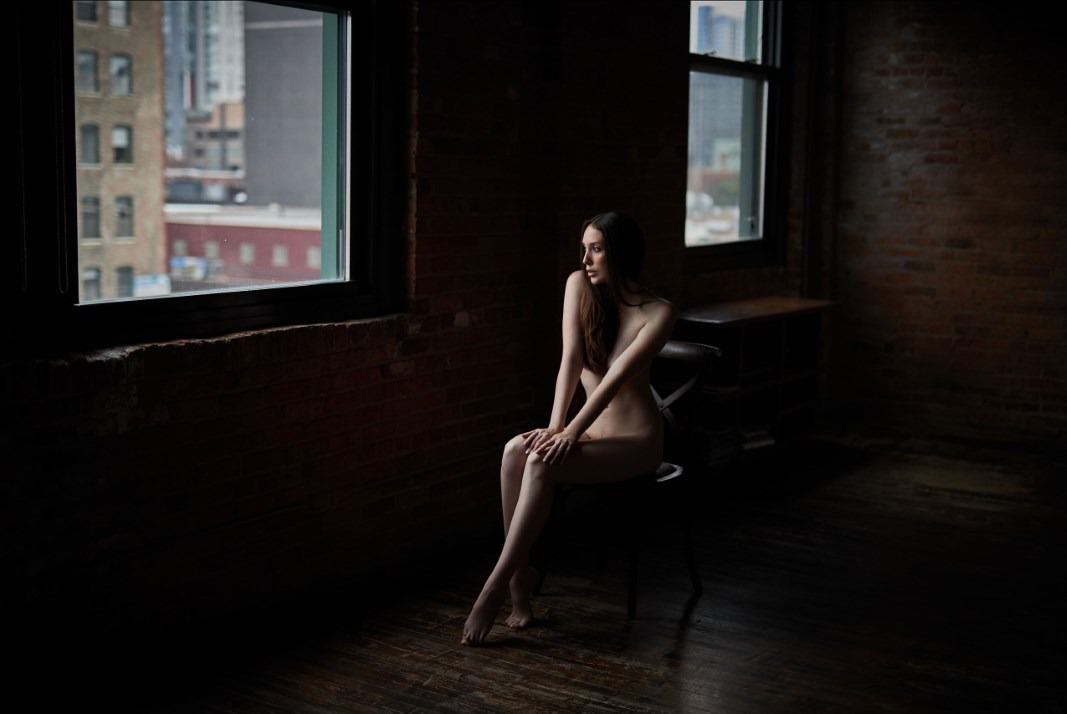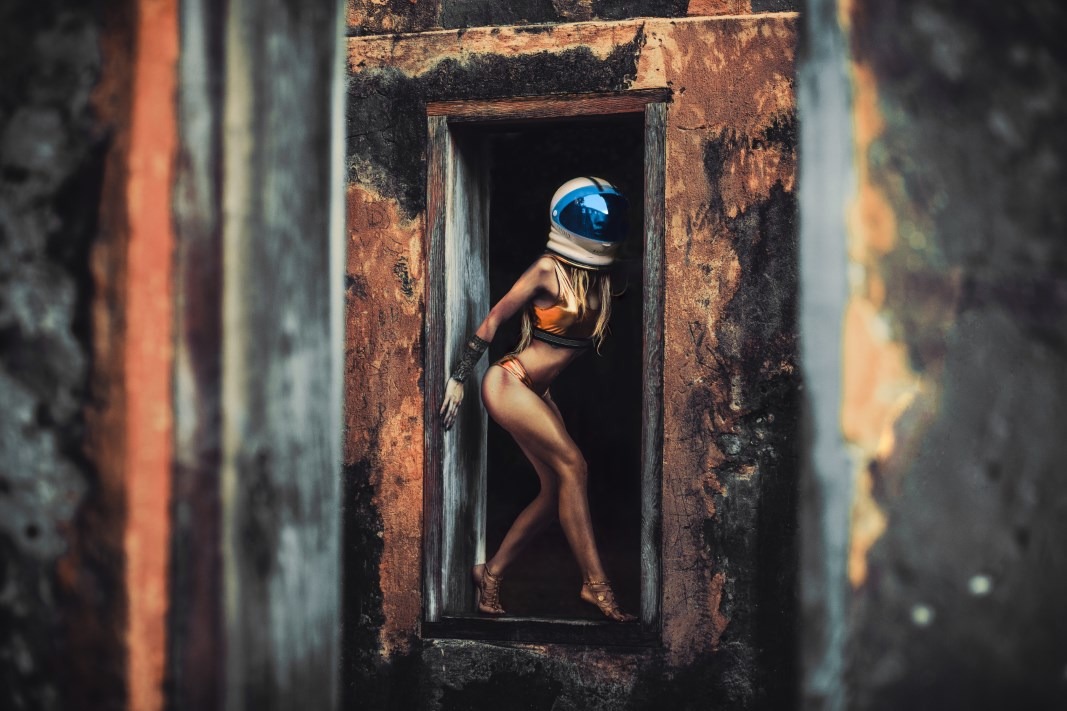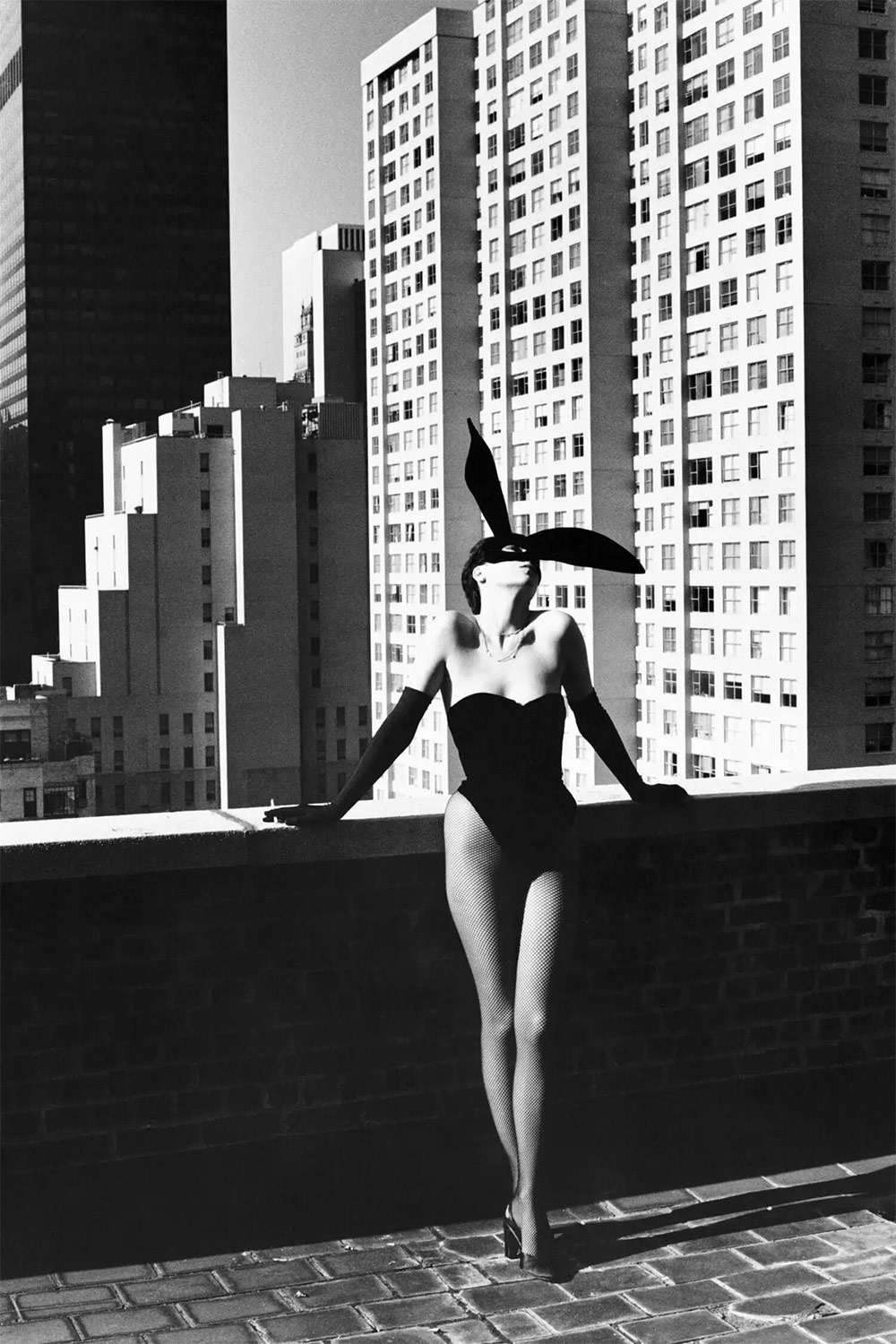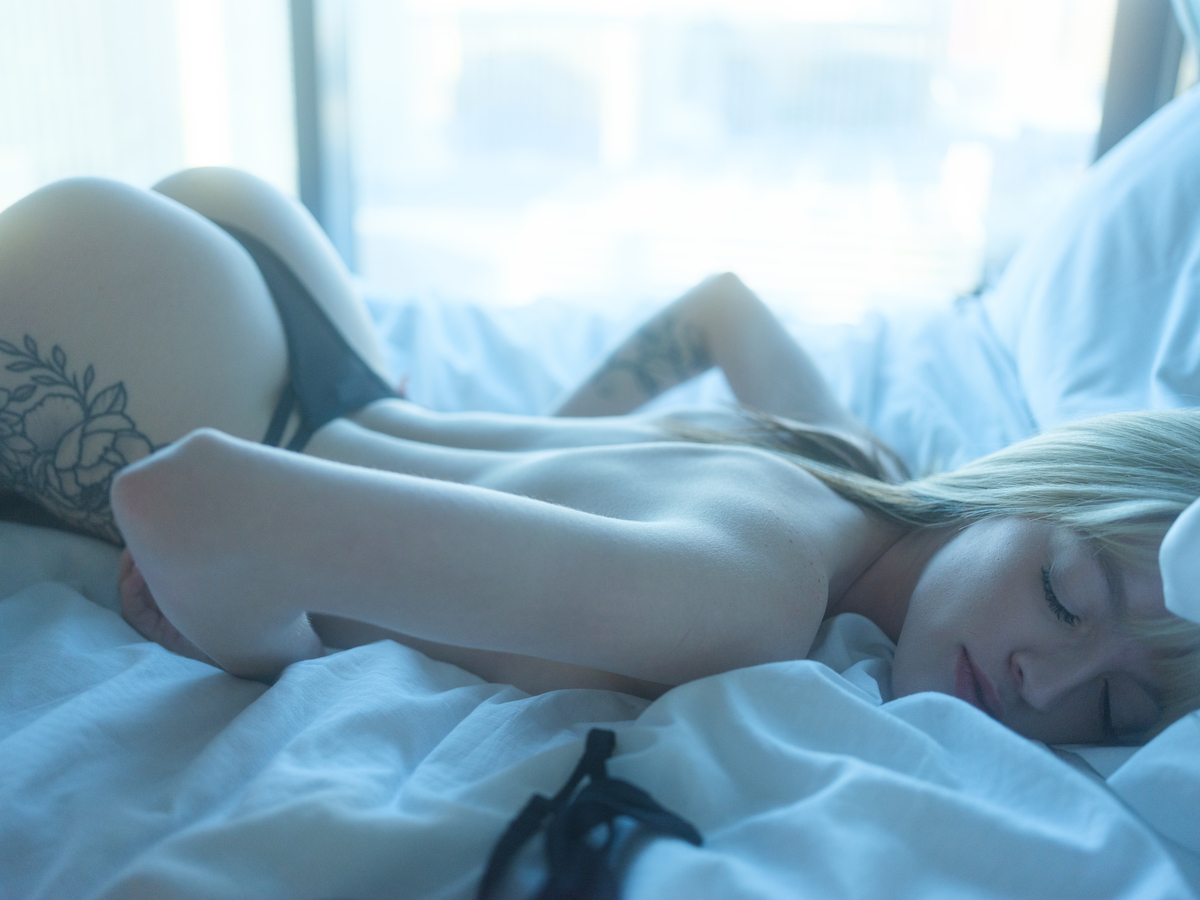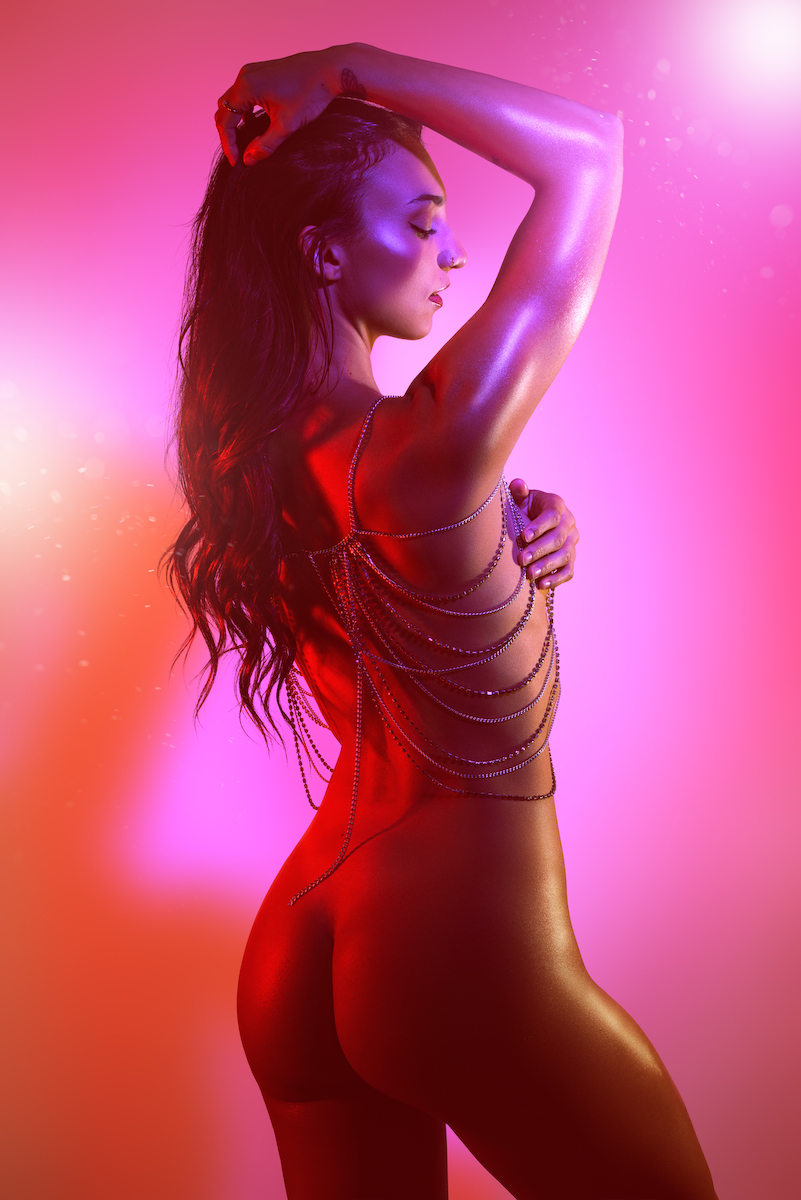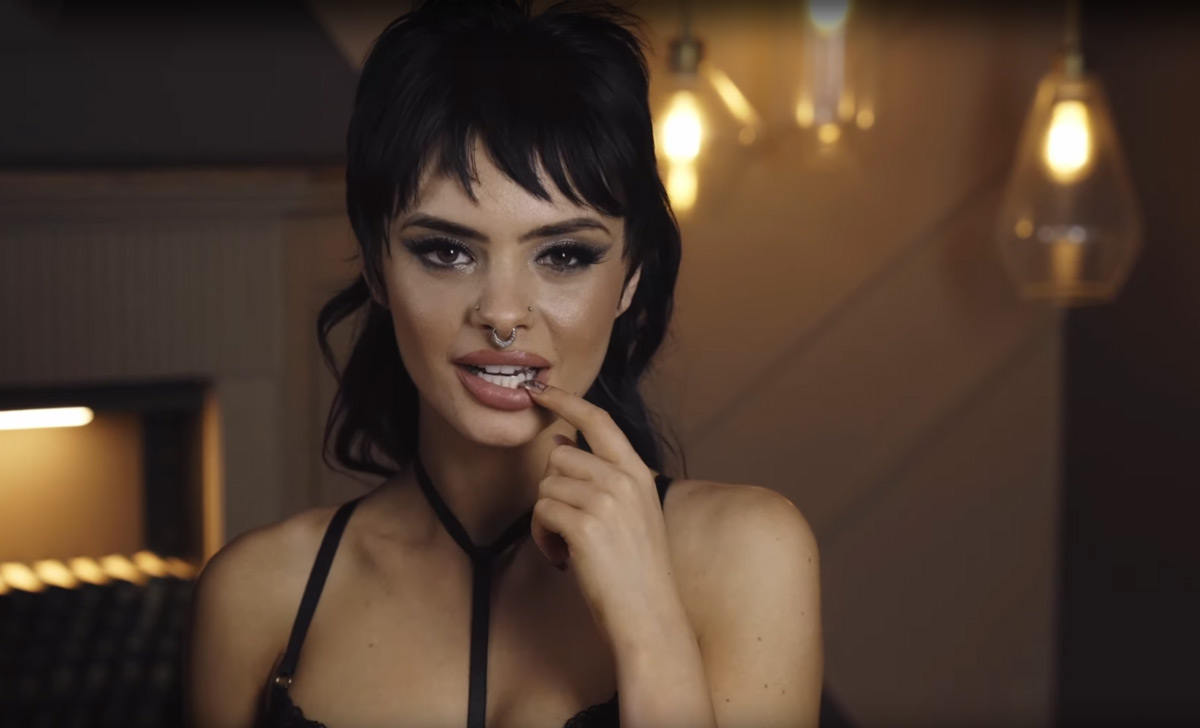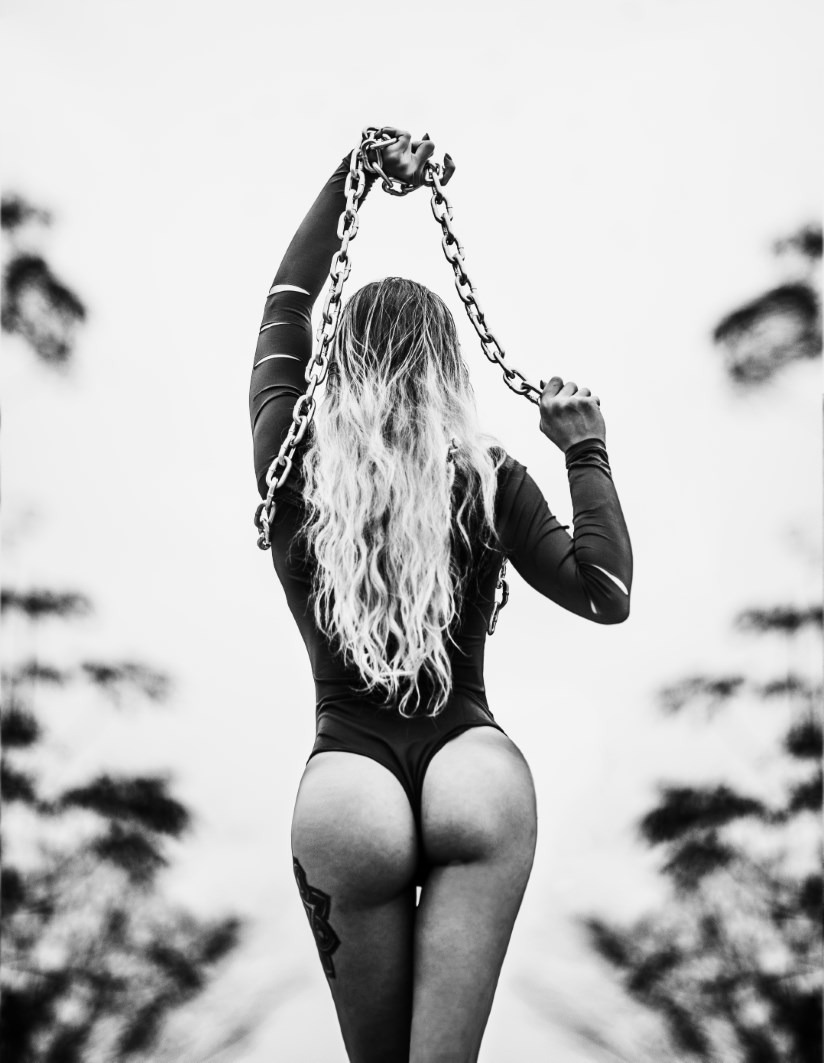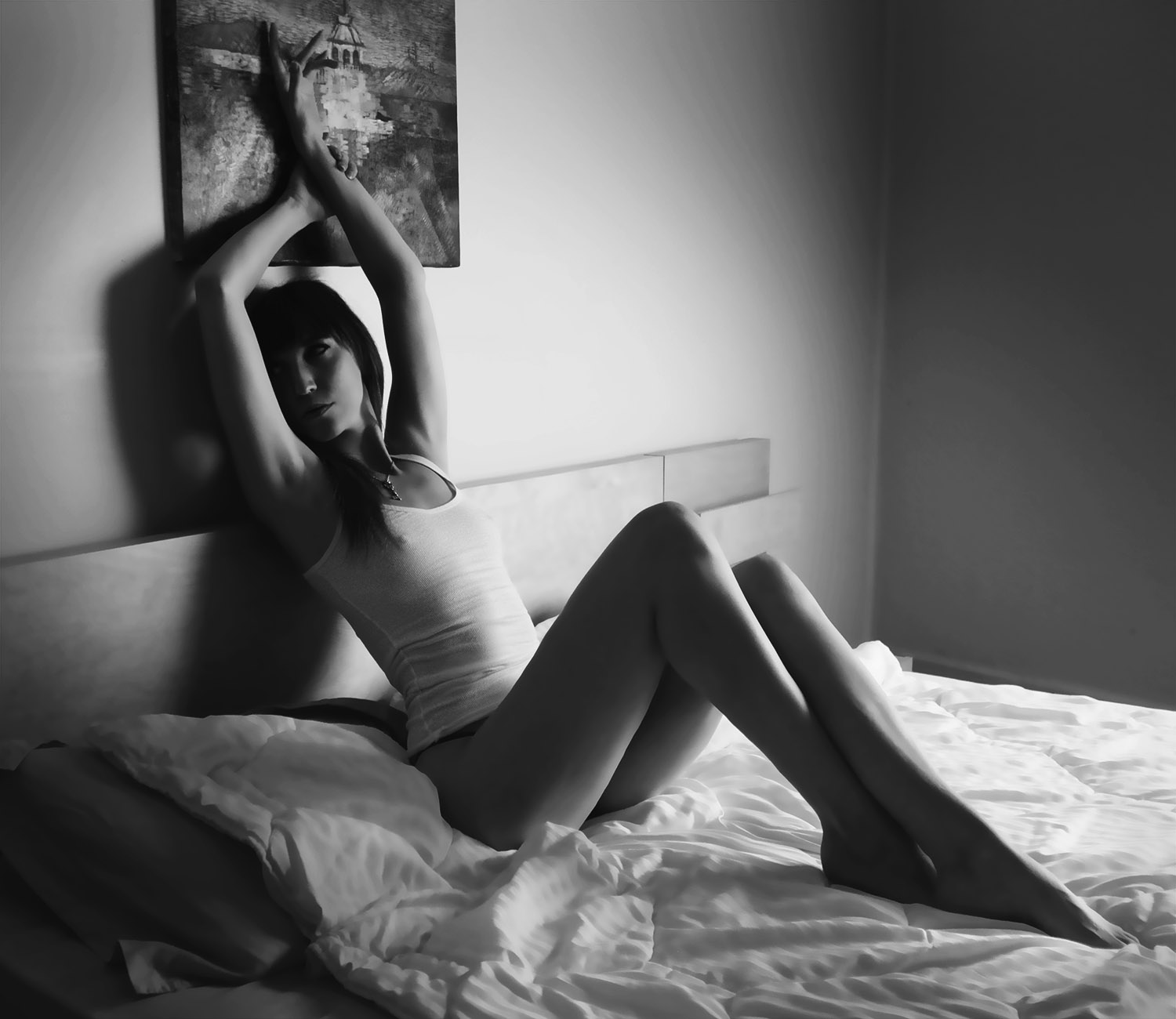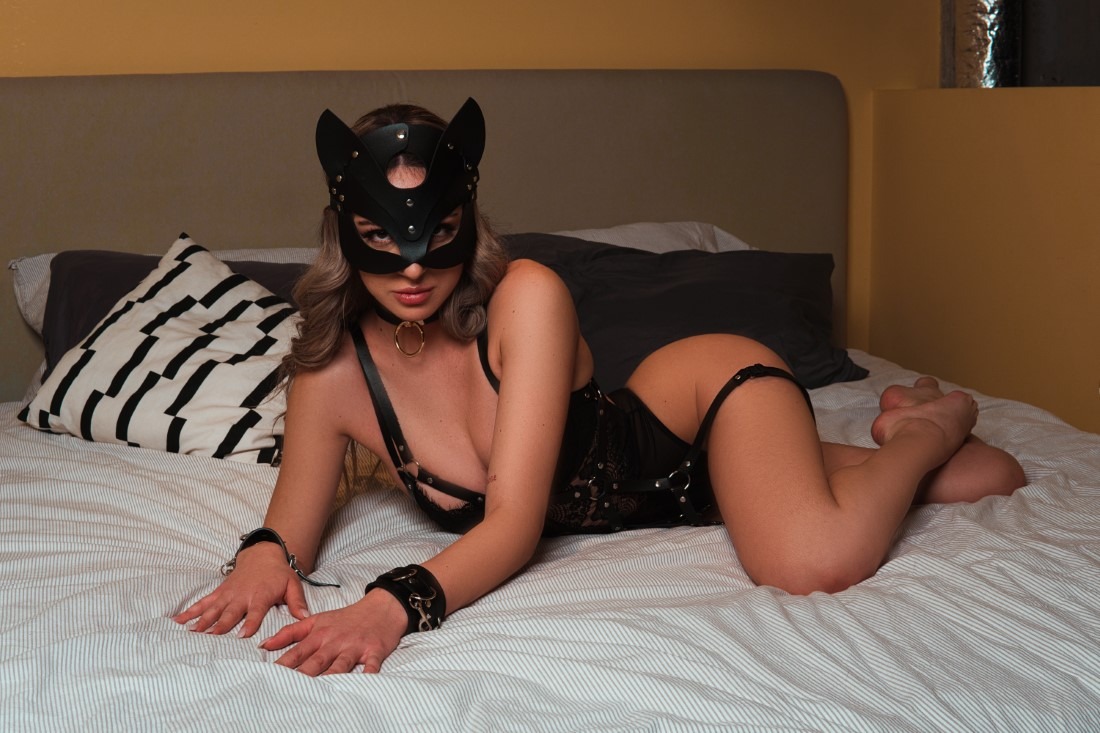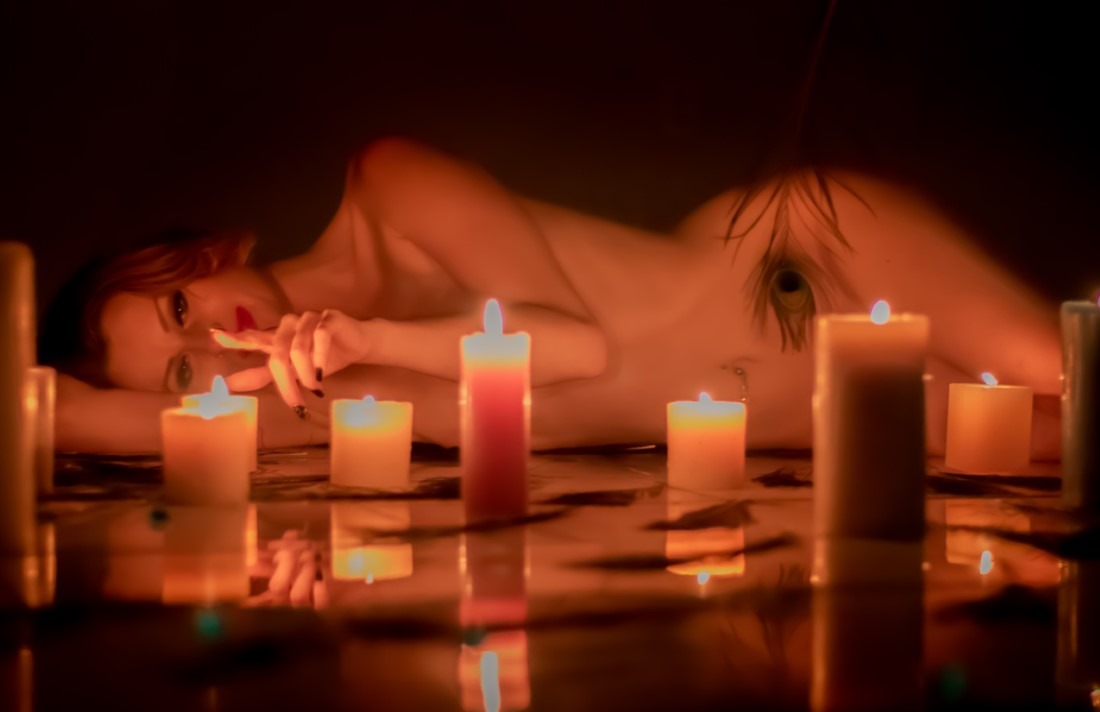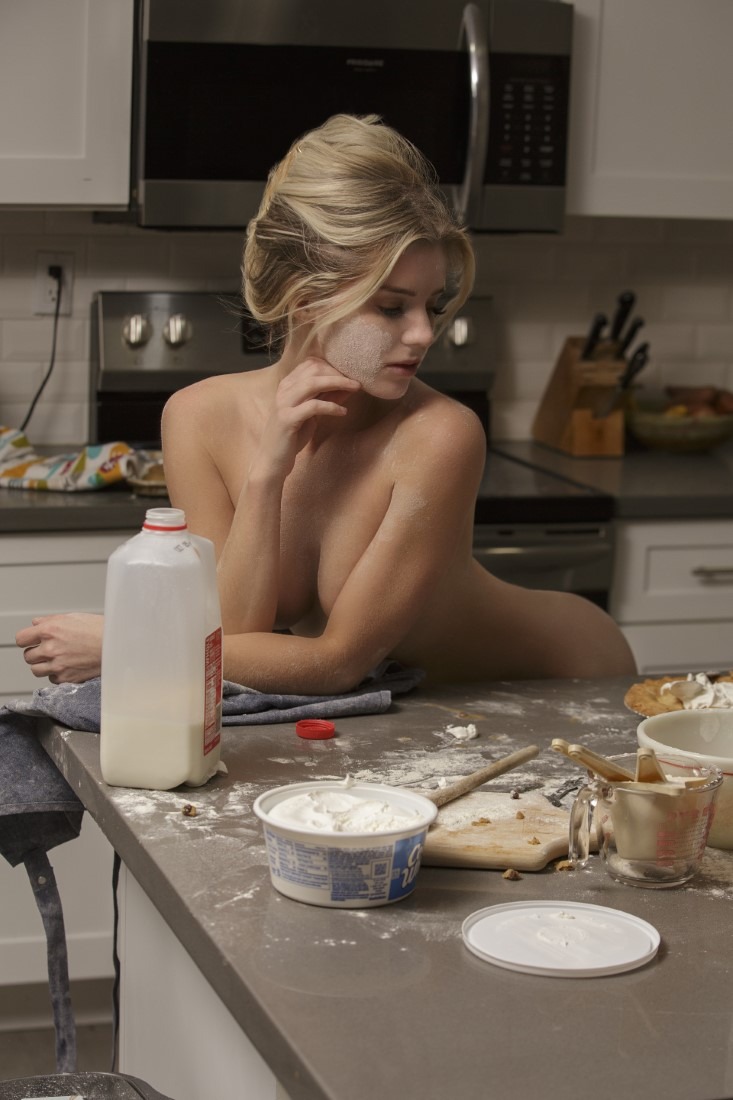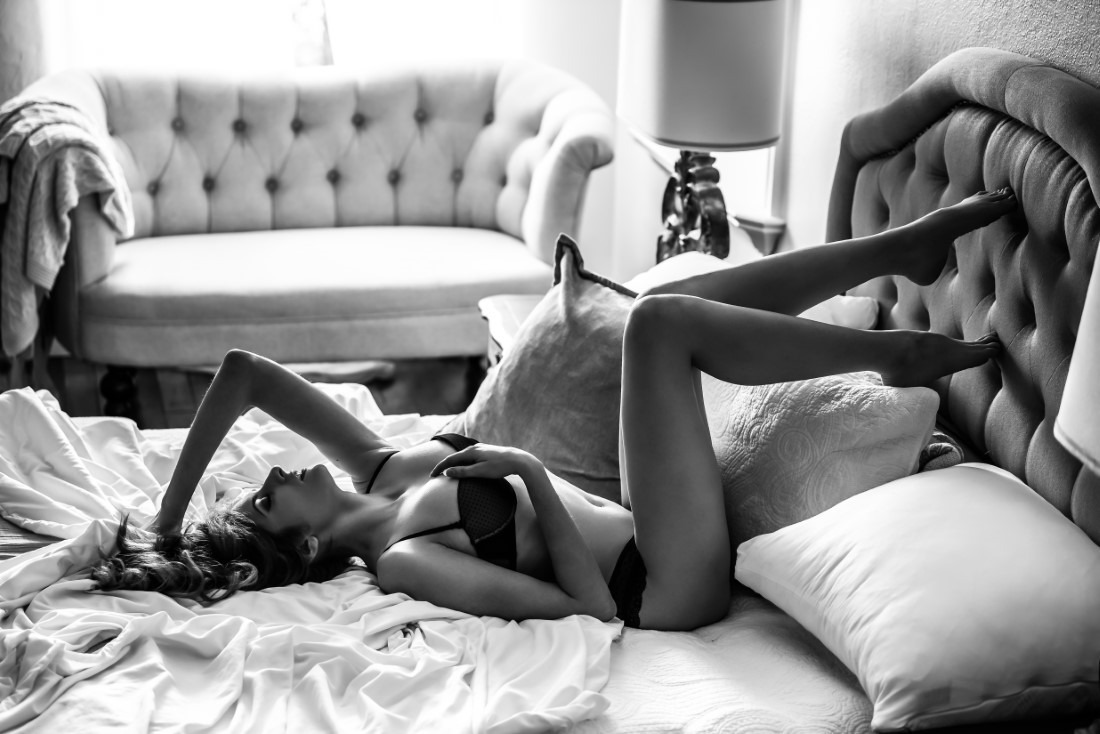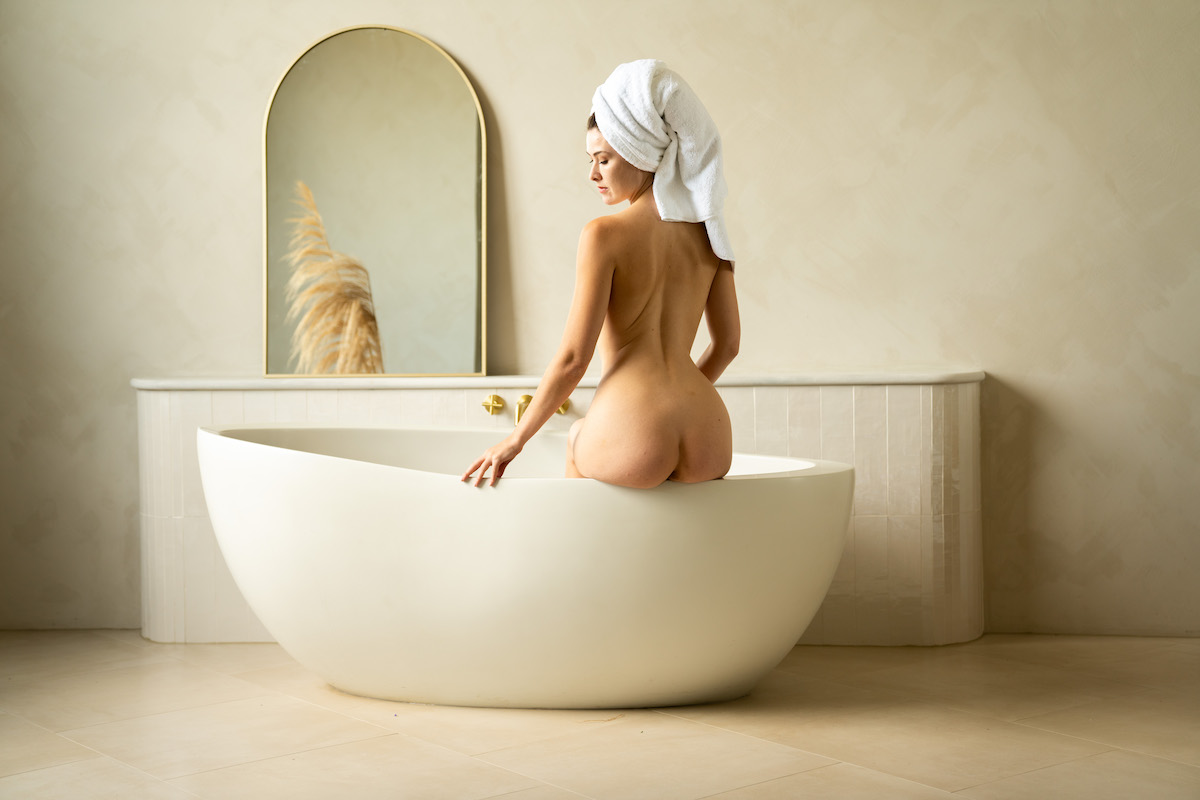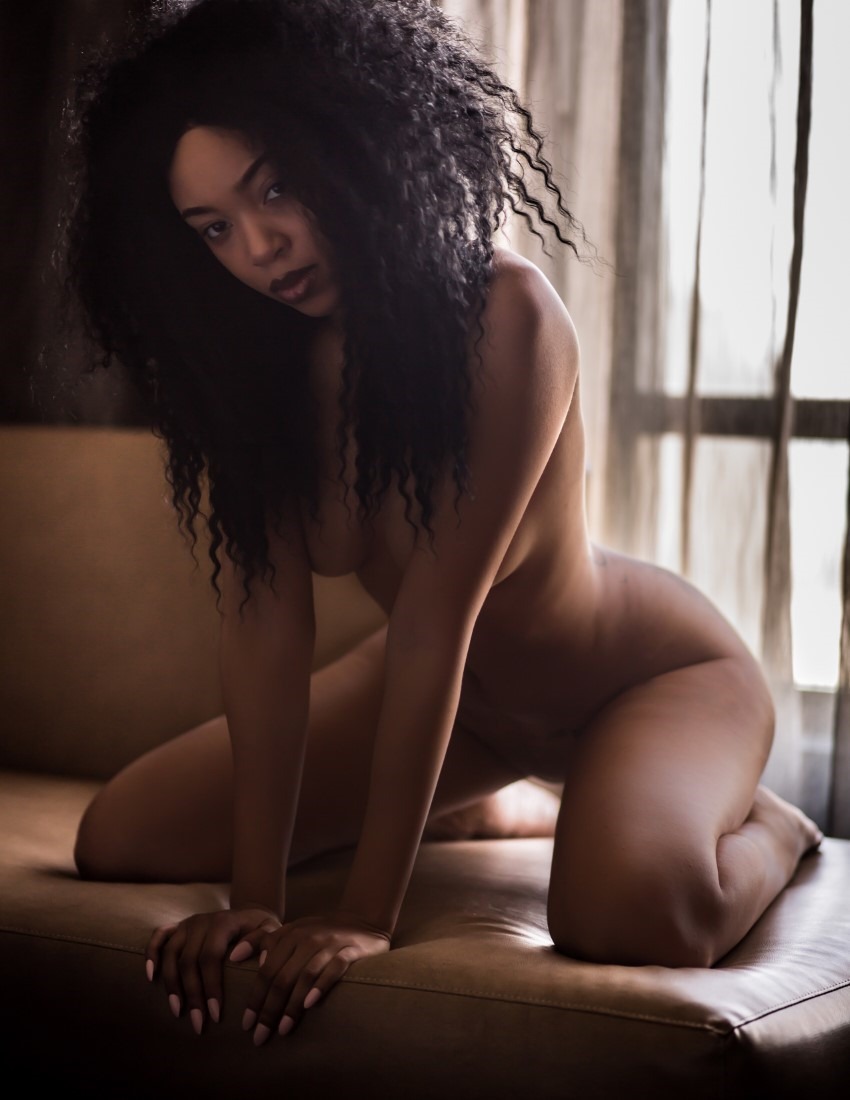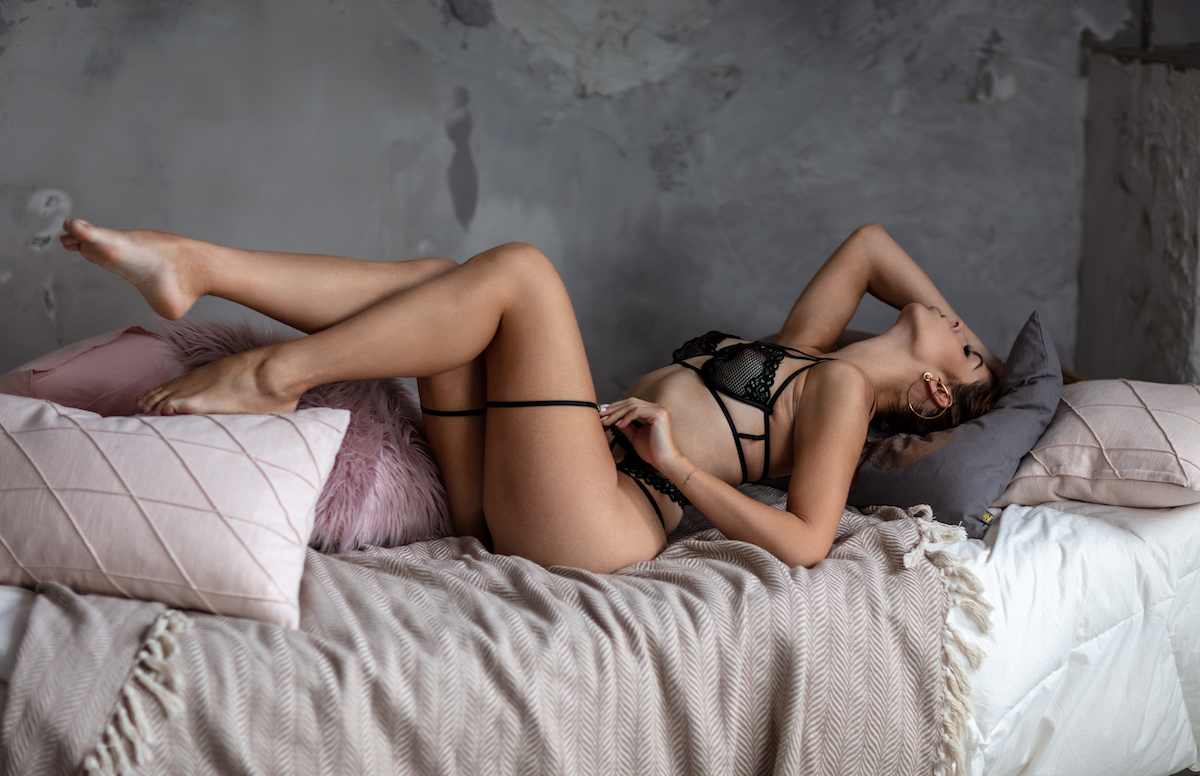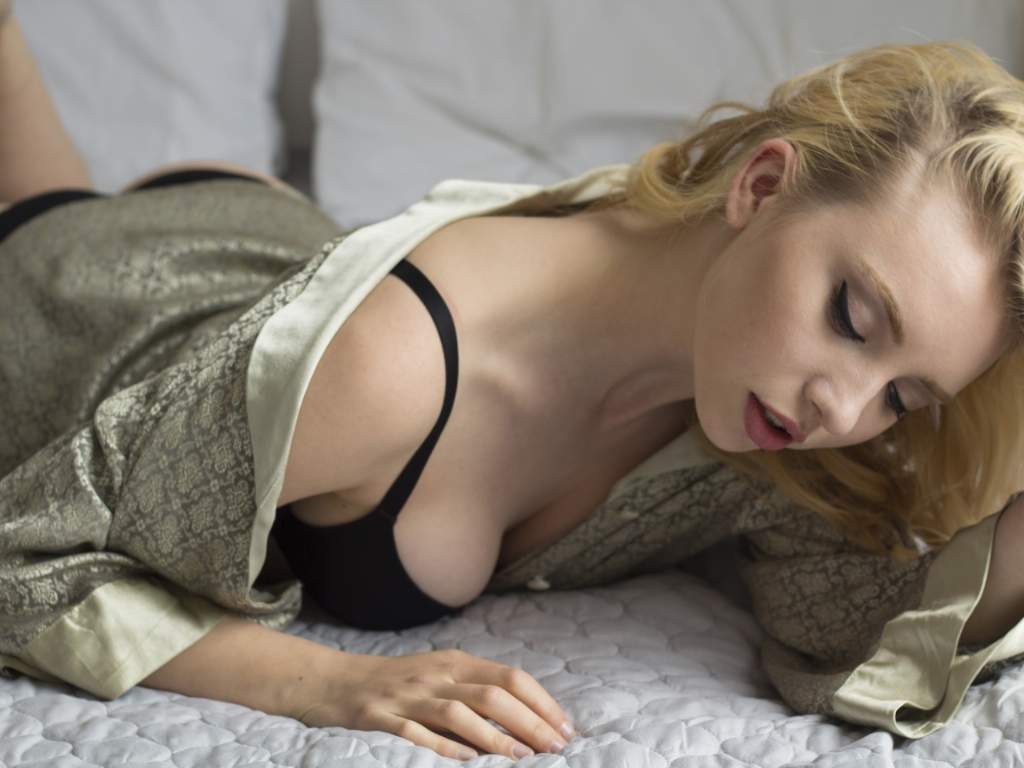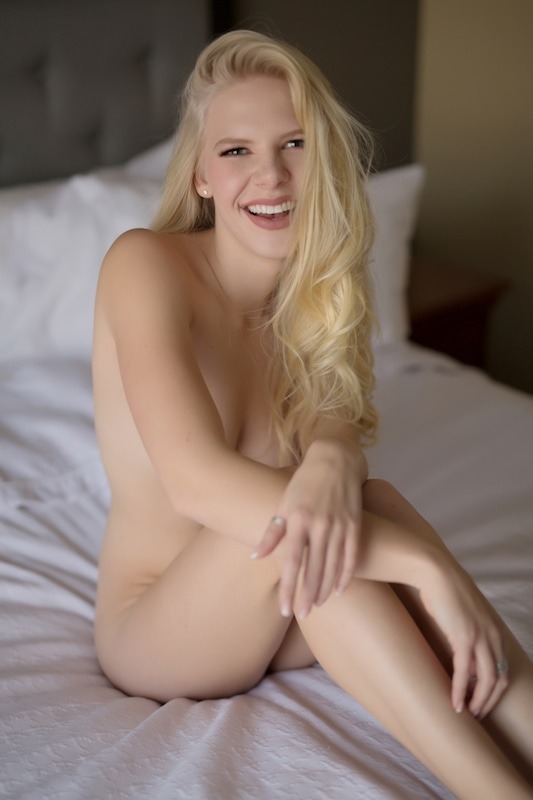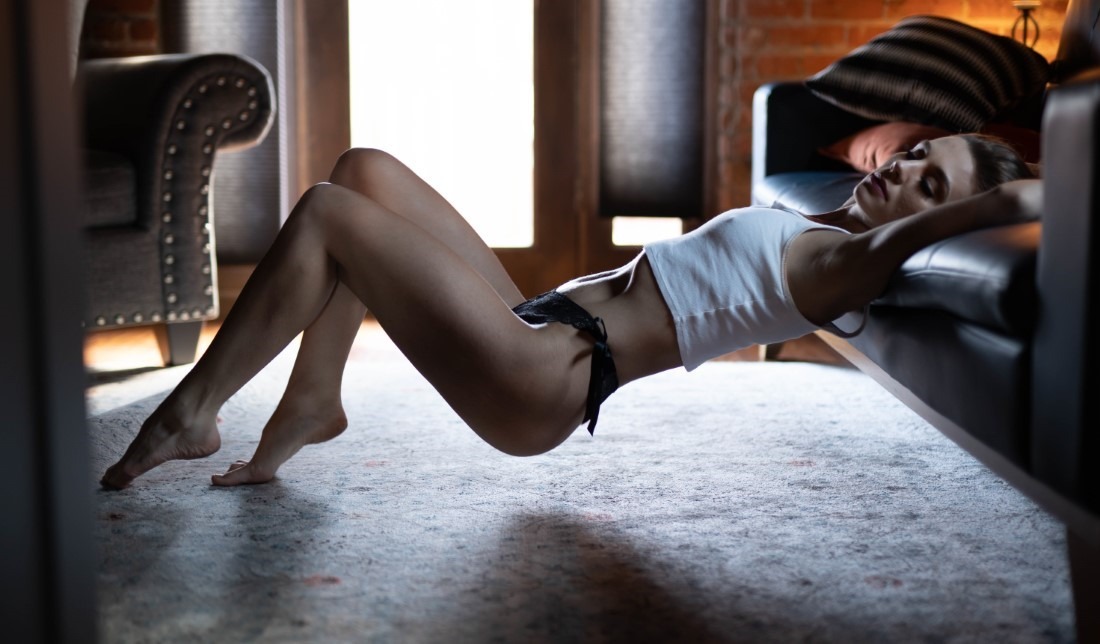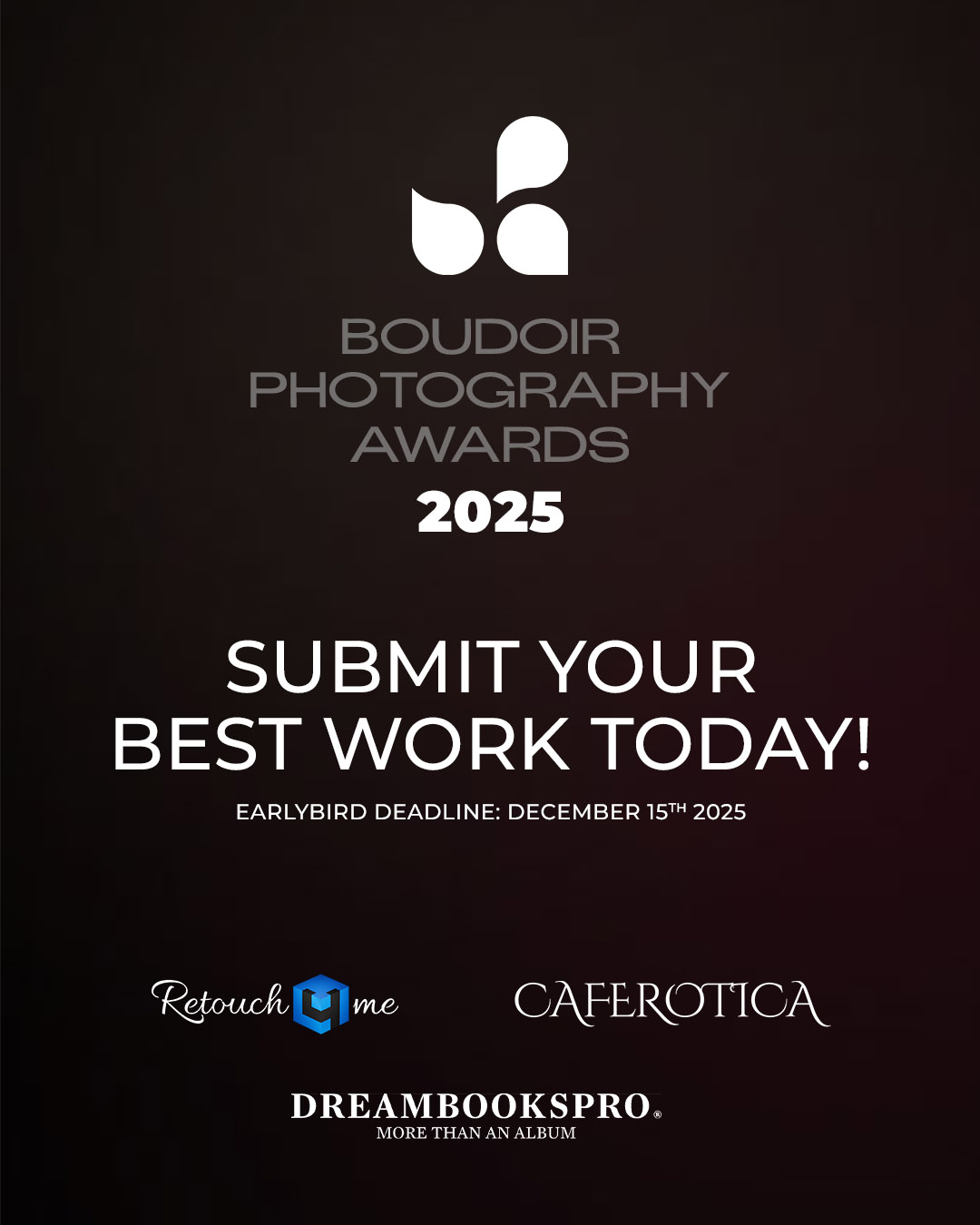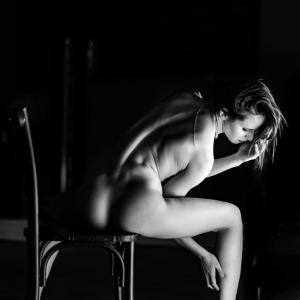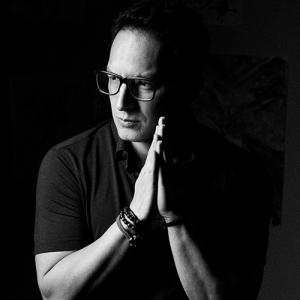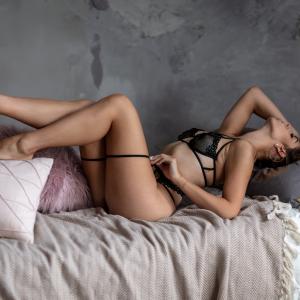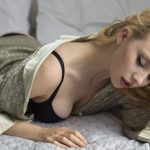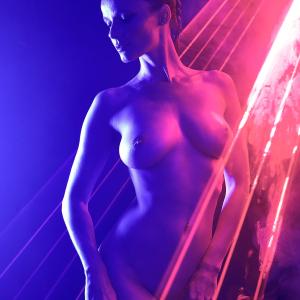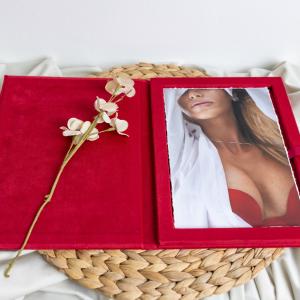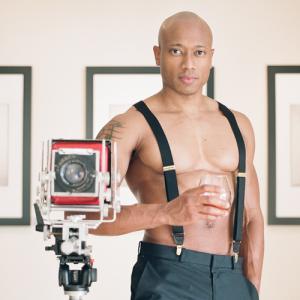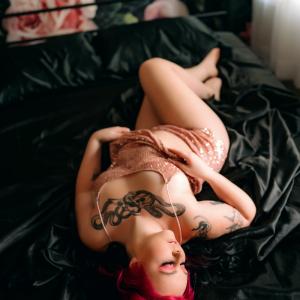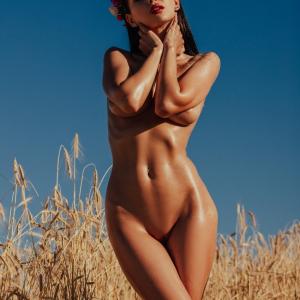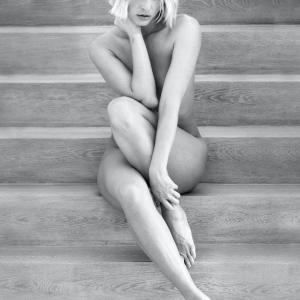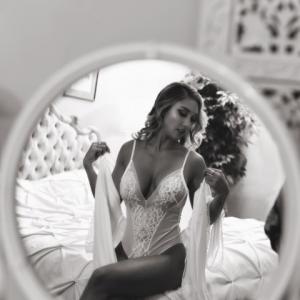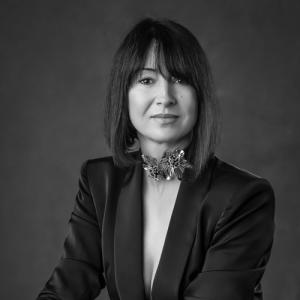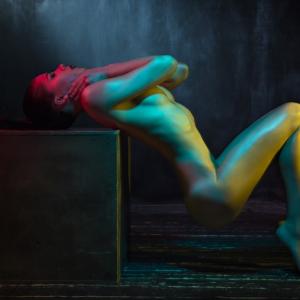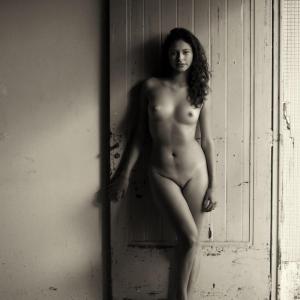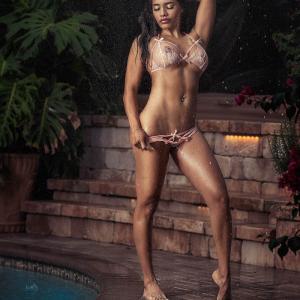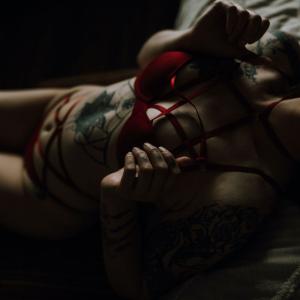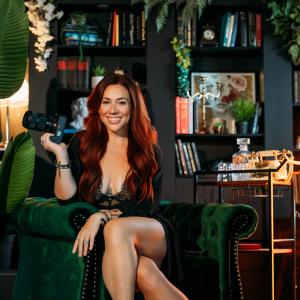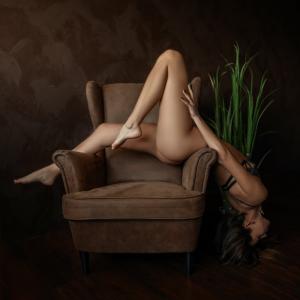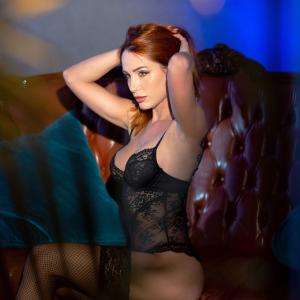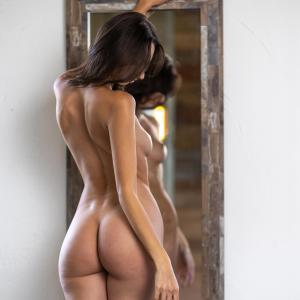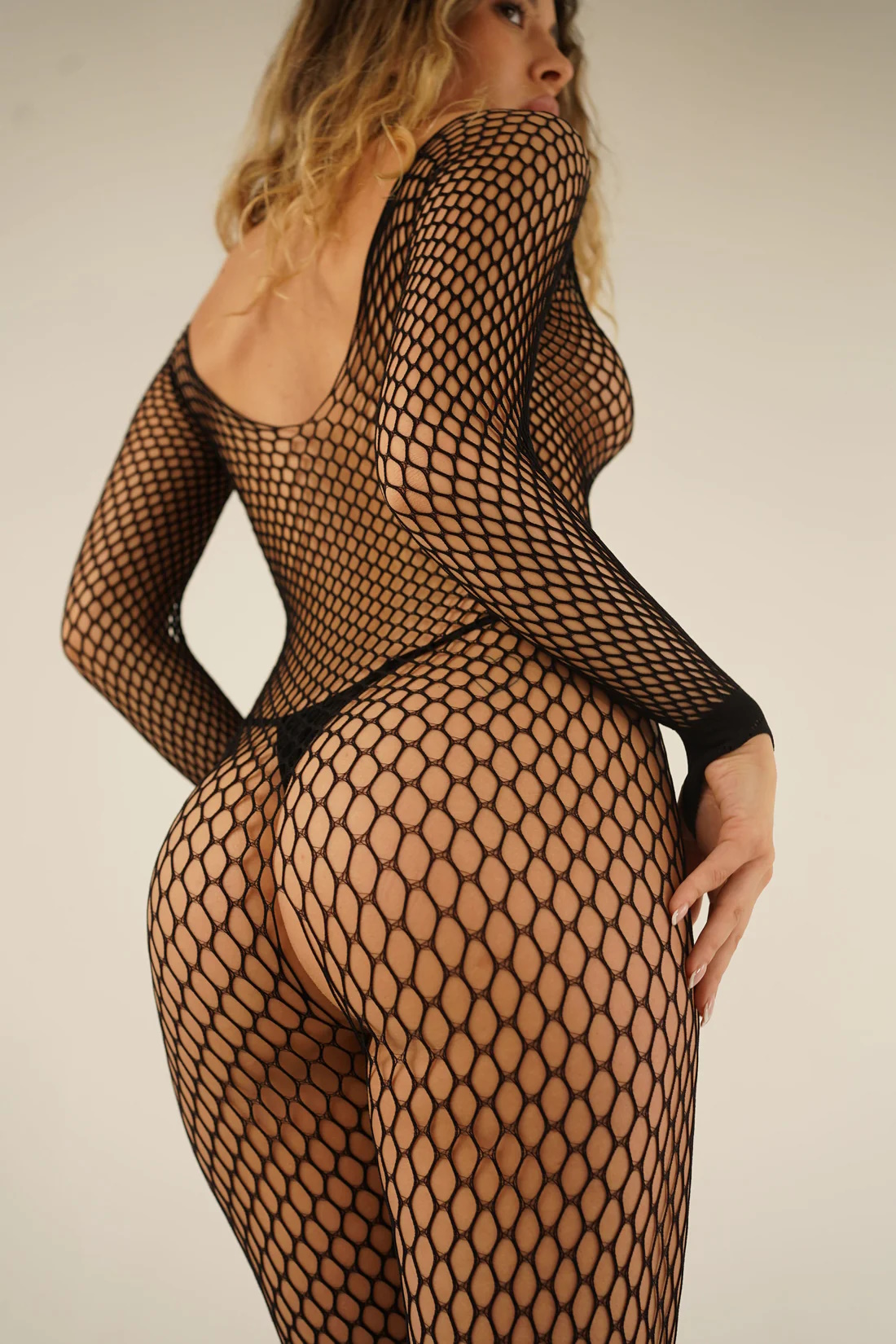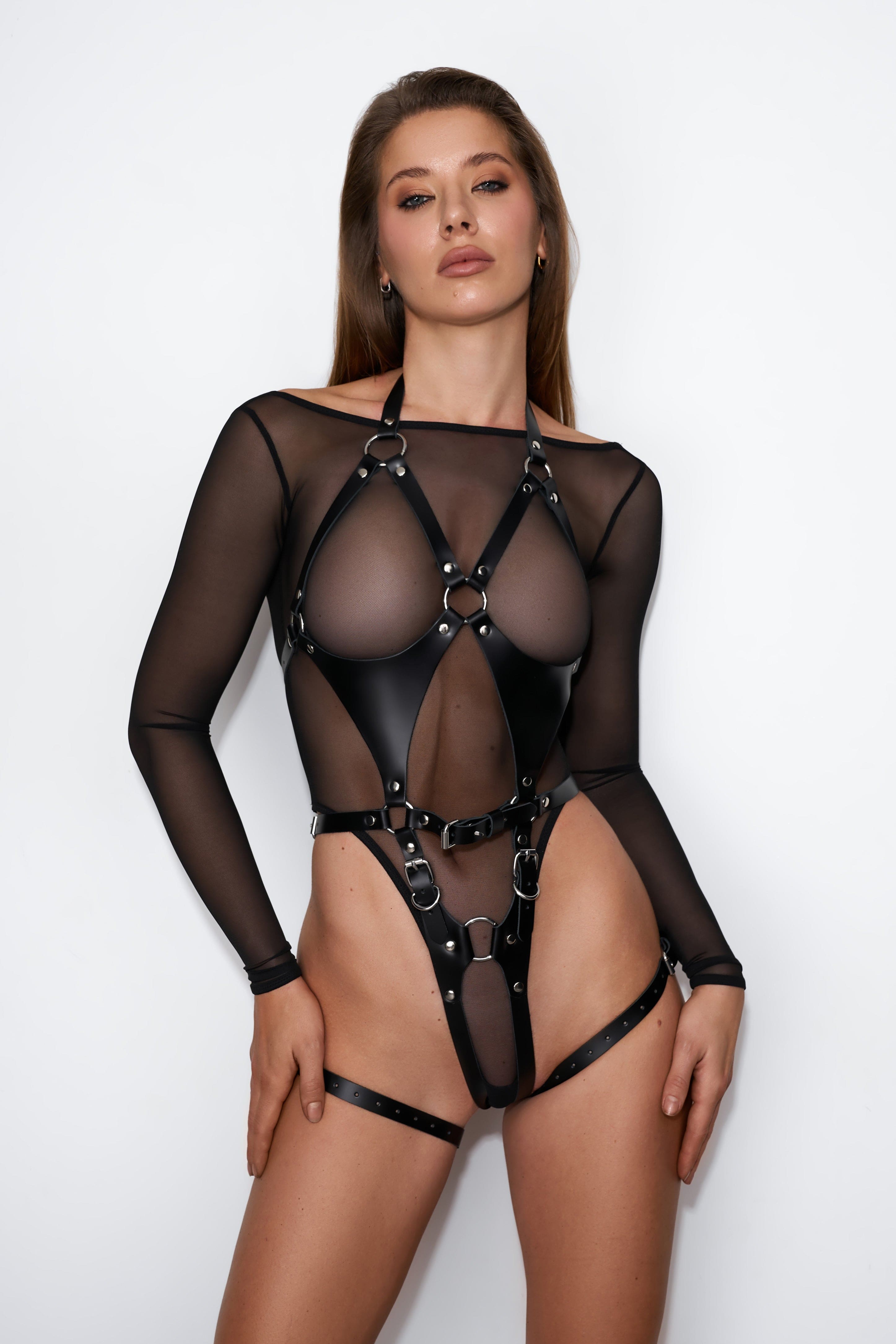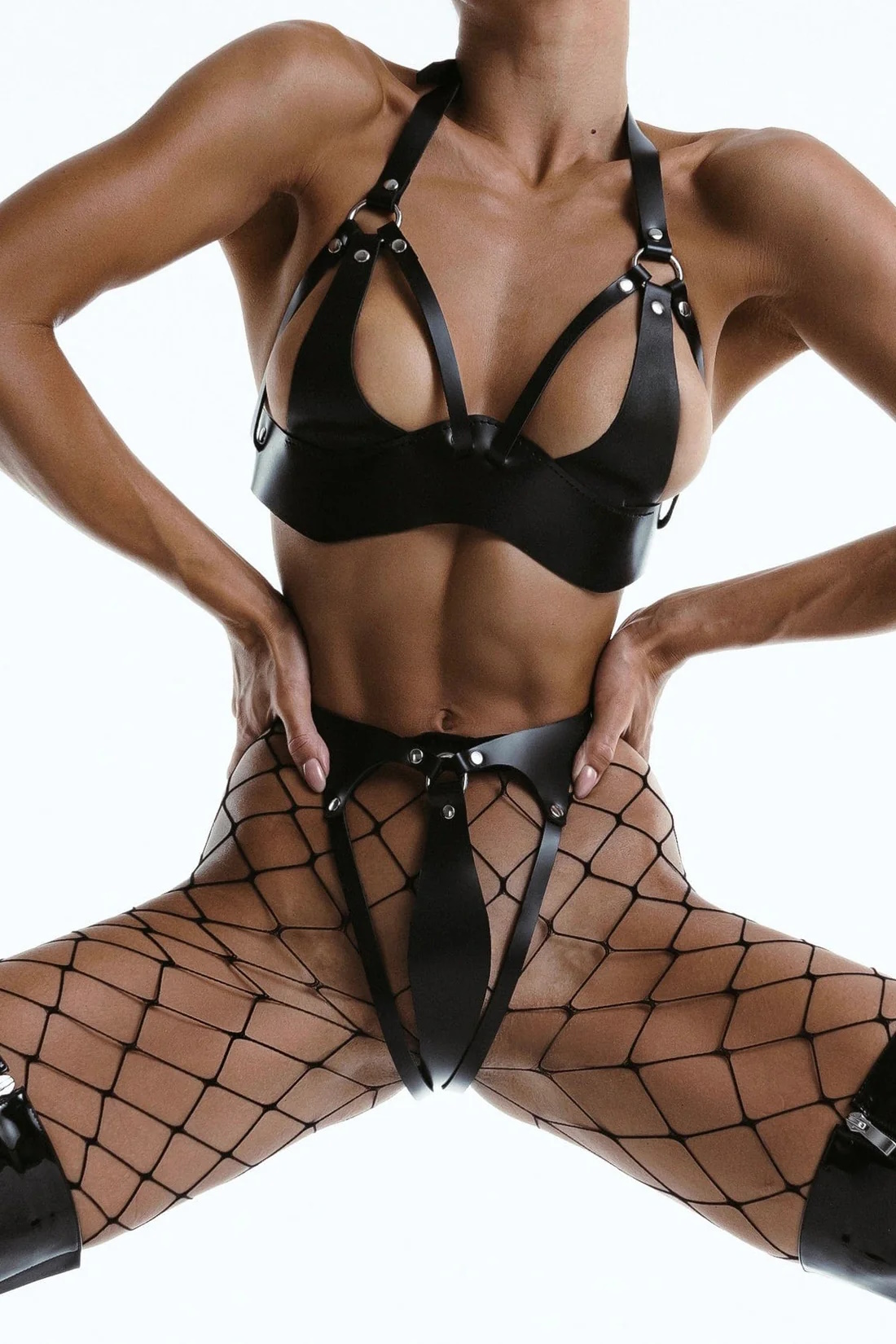Explore the essence of boudoir art, where photography meets artistic expression to capture intimate, elegant beauty.
Boudoir photography, a genre that has gained immense popularity in recent years, is more than just capturing intimate images. It's an art form that intertwines vulnerability, beauty, and the unique essence of the individual. This blog post delves into the artistic elements that make boudoir photography a profound and captivating art form.
The Essence of Boudoir Photography
Boudoir photography is often misunderstood. Far from being merely suggestive or provocative, it's a celebration of self-love, confidence, and the intimate beauty of the human form. It's about capturing the essence of a person in their most vulnerable and authentic state. Now, let's dive into the artistic elements in boudoir photography:
1. Lighting: The Painter's Brush in the Art of Boudoir Photography
In the nuanced world of boudoir photography, lighting does much more than merely illuminate the subject; it acts as a pivotal artistic tool, akin to a painter's brush. It shapes, defines, and sets the tone, playing a crucial role in how the mood, atmosphere, and aesthetic nuances of the photograph are conveyed. The interplay of light and shadow can transform the human form into a landscape of emotion and story, making lighting an essential element in the artistry of boudoir photography.
Natural Light: Crafting an Aura of Authenticity and Romance
The use of natural light in boudoir photography is about harnessing the soft, diffused rays of the sun to create images that are imbued with a sense of gentleness, romance, and authenticity. This type of lighting is particularly effective in highlighting the natural beauty and vulnerability of the subject. The way morning light can filter through a sheer curtain, casting a warm, ethereal glow on the skin, or how the late afternoon sun can create a golden, dreamy ambiance, adds a layer of depth and emotion to the photographs. Natural light is ever-changing and offers a spectrum of possibilities, from the subtle, tender illumination of a cloudy day to the dramatic contrasts of a sunny afternoon, each providing a unique narrative to the boudoir scene.
Artificial Light: Sculpting with Shadows and Highlights
In contrast to the softness of natural light, artificial lighting in a studio setting offers the photographer a higher degree of control and creativity. Studio lights can be manipulated to create images that are bold, dramatic, and laden with mood. The ability to adjust the intensity, direction, and color of artificial light means that photographers can sculpt the subject's form in a way that accentuates curves, angles, and the unique contours of the body. Strategic use of shadows can add a sense of mystery and intrigue, highlighting some areas while letting others fade into darkness. This interplay of light and shadow not only enhances the physical aspects of the subject but also adds a dramatic flair to the overall composition of the photograph. Whether it's the harsh lines of a high-contrast setup or the soft gradients of a more diffused source, artificial lighting is a powerful tool in defining the artistic direction of a boudoir session.
2. Composition: The Art of Placement and Perspective
In the realm of boudoir photography, composition transcends the basic concept of how a subject is positioned within the frame. It's an intricate dance of elements that come together to tell a compelling story, evoke emotions, and capture the viewer's imagination. The composition in boudoir photography is a deliberate choice, a language spoken through the lens that narrates an intimate tale of the subject.
Rule of Thirds: Crafting Balance and Intrigue
The Rule of Thirds is a fundamental principle in the art of photography, and in boudoir imagery, it's used to create a harmonious balance that pleases the eye. By dividing the frame into a grid of nine equal segments, photographers place the subject along these lines or at their intersections. This technique allows for a more natural, engaging composition, drawing the viewer’s attention to key elements of the photo. In boudoir photography, positioning a subject off-center using this rule can add a sense of intrigue and spontaneity, making the image more dynamic and engaging.
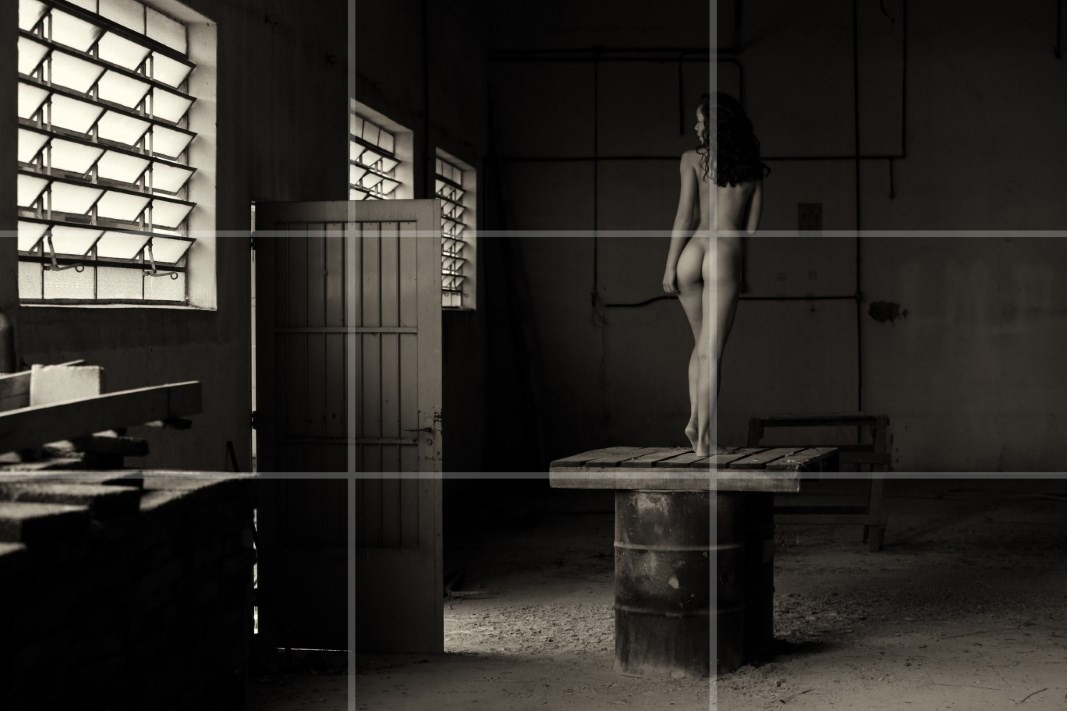
Leading Lines: Guiding the Viewer’s Journey
The use of leading lines is a powerful compositional tool in boudoir photography. These lines guide the viewer’s eye through the photograph, creating a sense of movement and depth. In boudoir photography, these lines can be the natural contours of the human body, the edge of a bed, the folds of a curtain, or even a ray of light. These elements act as visual pathways, leading the viewer’s gaze to focal points, such as the subject’s eyes or a specific pose, thereby creating a story within a single frame. The clever use of leading lines can transform a simple photograph into an enchanting visual journey.
Framing: Adding Depth and Context
Framing within a photograph is a technique used to draw attention to the subject by blocking other parts of the image with something in the scene. In boudoir photography, this can be achieved in numerous creative ways. Doorways, windows, and arches are classic framing devices, offering a glimpse into the subject's world. Alternatively, photographers can use softer elements like the draping of fabric, the arc of an arm, or even the shadows cast across the body. This not only adds depth and layers to the image but also contributes to the narrative, creating a sense of intimacy and focus. The frame within a frame technique is particularly effective in boudoir photography as it can create a private, almost voyeuristic, window into the subject’s personal space.
3. Color and Tone: The Emotional Palette of Boudoir Photography
In the realm of boudoir photography, the deliberate selection of color and tone is pivotal in establishing the mood and atmosphere of the image. These elements are not just mere aspects of the photograph; they are the silent storytellers, conveying emotions and narratives without a single word.
The choice of color and tone in boudoir photography is more than an aesthetic decision; it's a means of emotional expression. From the passionate embrace of warm tones to the soothing touch of cool hues and the dramatic elegance of monochrome, each palette tells its own story, guiding the viewer's emotional response and shaping their perception of the subject. Read more in this article to discover the impact of color in boudoir photography.
Monochrome: A Timeless Elegance
Monochrome photography, especially in the boudoir genre, offers a timeless and classic elegance. By stripping away the distractions of color, black and white images bring a heightened focus to the contrast and form. The interplay of light and shadow becomes more pronounced, carving out the contours and shapes of the human body with a dramatic intensity. Monochrome tones can convey a range of moods, from the soft, delicate grays evoking a gentle, romantic feel, to the stark, bold contrasts that create a sense of drama and intensity. This dichotomy in black and white photography allows for a deep exploration of textures and details, highlighting the intimate nuances of the subject.
Discover the elegance and timeless beauty of our extensive collection by exploring our black & white boudoir photography gallery.
Cool Tones: Serenity and Calm
On the other end of the spectrum, cool tones like blues and greens are known for evoking a sense of calmness, serenity, and tranquility. In boudoir photography, these hues can create a backdrop of peacefulness and introspection, offering a counterpoint to the warmth and intensity of the warmer spectrum. Cool tones have the power to transform the space into a serene sanctuary, where the subject can convey a sense of quiet confidence and self-reflection.
The use of blues and greens can be particularly effective in creating a sense of ethereal beauty. These colors can mimic the natural elements like the calm of the ocean or the tranquility of a forest, thereby bringing an element of nature and purity into the photograph. The cool palette can also accentuate the subject's skin tone, making it appear more porcelain and delicate. This can be especially impactful in creating a mood of elegance and understated sophistication.
In boudoir photography, the choice of cool tones can also be a strategic decision to communicate a narrative of empowerment and self-acceptance. It can set a stage where the subject's inner strength and calm demeanor are the focal points, allowing for a portrayal that goes beyond traditional perceptions of sensuality, tapping into deeper themes of personal identity and self-worth.
Warm Tones: A Palette of Passion and Warmth
The use of warm tones in boudoir photography – encompassing hues of yellows, reds, and oranges – adds a layer of warmth, passion, and vivacity to the images. These colors can create an inviting, cozy atmosphere, wrapping the subject in a visual embrace that radiates comfort and intimacy. Warm tones often evoke feelings of love, passion, and desire, making them a popular choice for images that aim to capture the sensual and romantic side of the subject. The glow of a golden hour light, or the use of soft, warm-hued lighting, can enhance skin tones, creating a luminous, radiant effect that is both flattering and enchanting.
Gels: Infusing Color and Emotion
In boudoir photography, the use of color gels stands as a transformative tool, adding depth and vibrancy to the emotional narrative of the images. These colored filters, when placed over lights, allow photographers to bathe their subjects in hues that enhance mood and atmosphere. A red gel can envelop the scene in a romantic, passionate ambiance, while a blue gel might introduce a serene, introspective mood. This technique goes beyond mere color addition; it's a form of artistic expression, enabling photographers to experiment with shades and intensities, thus adding a unique, creative flair to each photograph. Gels offer a dynamic way to emphasize themes, complement the subject's features, and convey deeper emotional undertones, making each boudoir session a distinct fusion of light, color, and feeling.
4. The Human Element: The Essence of Emotion and Vulnerability
In the intimate world of boudoir photography, the most profound element lies in capturing the raw emotion and vulnerability of the subject. This genre goes beyond mere physicality; it delves into the depths of personal expression and emotional revelation.
Expressions: Windows to the Soul
Facial expressions play a pivotal role in boudoir photography. A simple look, a subtle smile, or a contemplative gaze can unveil a spectrum of emotions, from longing and desire to strength and independence. The power of a subject's expression in a boudoir photo is immense – it can transform the mood of the image, guiding the viewer into the subject's inner world. The photographer's skill in capturing these fleeting moments is crucial. It’s about finding that split second where the subject's eyes or the curve of a smile tells a story deeper than words could express. These expressions, whether they are of confidence, introspection, or playful flirtation, are the silent yet powerful communicators of the subject's narrative.
Body Language: The Unspoken Story
Equally important in boudoir photography is the subject's body language. The way the body is positioned, the tilt of the head, the placement of hands, and the curve of the spine – each of these aspects contributes to the storytelling of the photograph. Body language in boudoir photography is a dance of subtlety and implication. It's about capturing the unguarded moments, the natural grace, and the unspoken words that the body conveys. The photographer must be attuned to these nuances, understanding how a slight change in posture can change the entire feel of the image. It's not just about creating a visually pleasing pose; it's about finding the pose that feels true to the subject's personal story and emotional state.
In boudoir photography, the human element – the expressions and body language of the subject – is the heart of the image. It's what makes each photograph unique and personal. Capturing the essence of the subject's emotions and vulnerabilities requires a deep sense of empathy and connection from the photographer. It's this connection that allows the subject to open up in front of the camera, revealing their true self, and it's this authenticity that transforms a simple image into a powerful portrayal of human emotion and vulnerability.
5. Wardrobe and Styling: Enhancing the Narrative
In the intimate art of boudoir photography, wardrobe and styling are not just about adornment; they are essential tools in crafting the narrative and setting the tone of the image. The choices made in what the subject wears, or chooses not to wear, play a pivotal role in defining the character and mood of the photograph, adding layers of meaning and depth to the visual story.
Lingerie: A Dance of Revelation and Concealment
Lingerie, with its classic and elegant allure, is a quintessential element in many boudoir photo shoots. It serves as a powerful medium that can be both revealing and concealing, creating a delicate balance between exposure and mystery. The choice of lingerie – be it delicate lace, smooth silk, or bold leather – can significantly influence the image's aesthetic and emotional tone. It can evoke feelings of sensuality, vulnerability, empowerment, or even playful flirtation. Lingerie acts as a symbol of intimacy and personal expression, allowing the subject to portray aspects of their personality and mood in a nuanced and subtle manner.
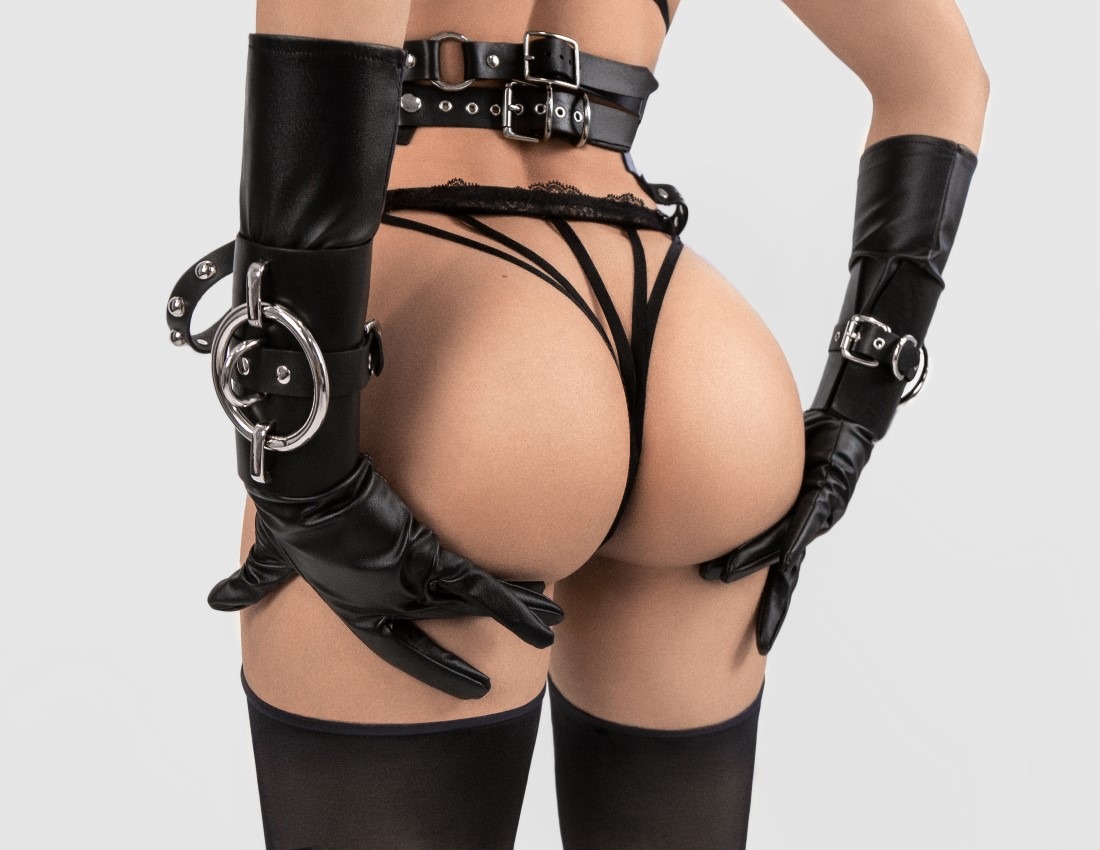
Boudoir Photography with Harness, Leather, or Latex: A Bold Expression of Style and Confidence
Blog - December 12, 2023
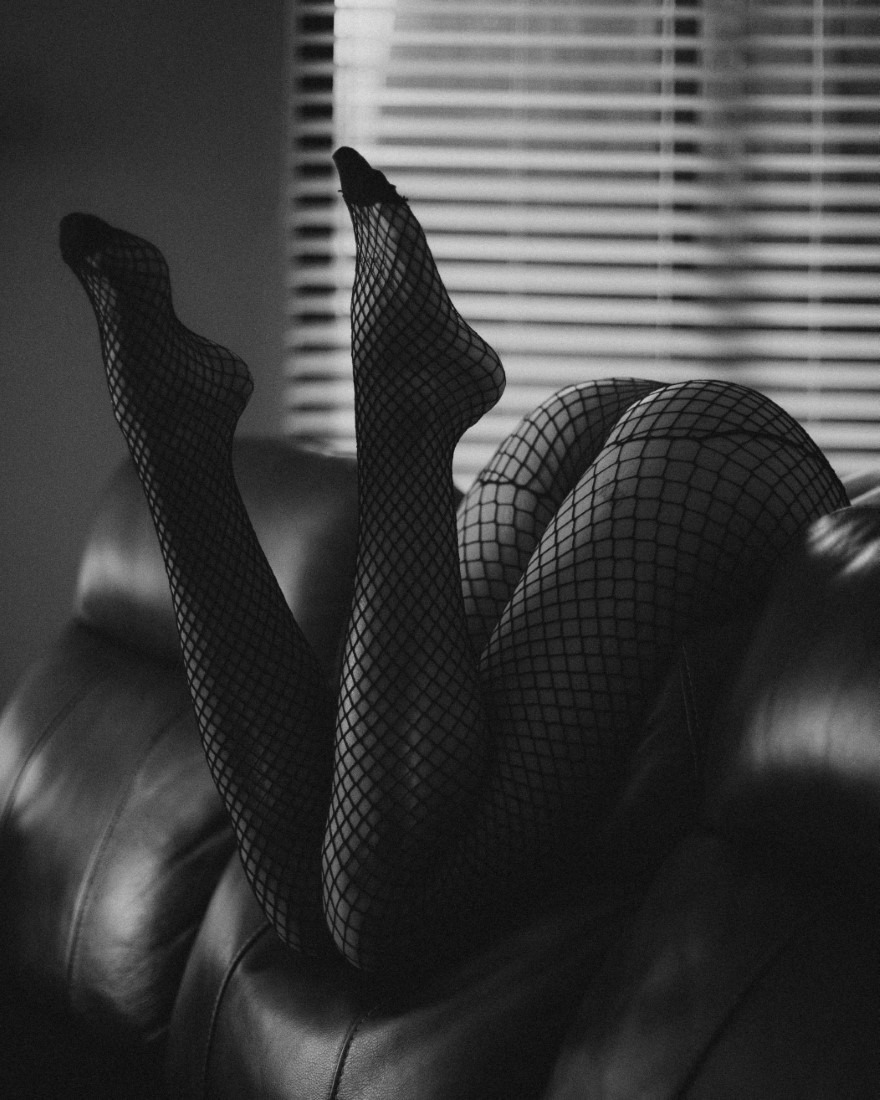
Boudoir Photography with Hosiery: A Timeless Elegance
Blog - December 6, 2023
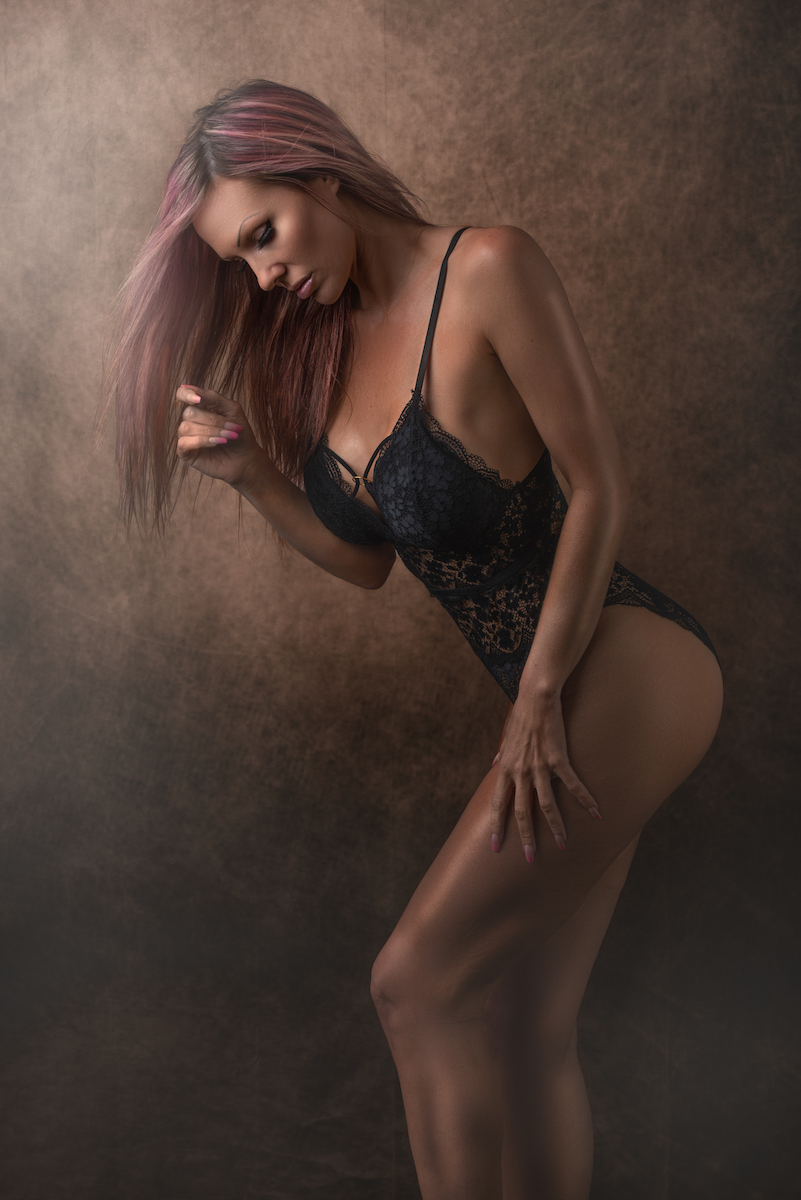
The Charm of Lingerie
Blog - October 29, 2022
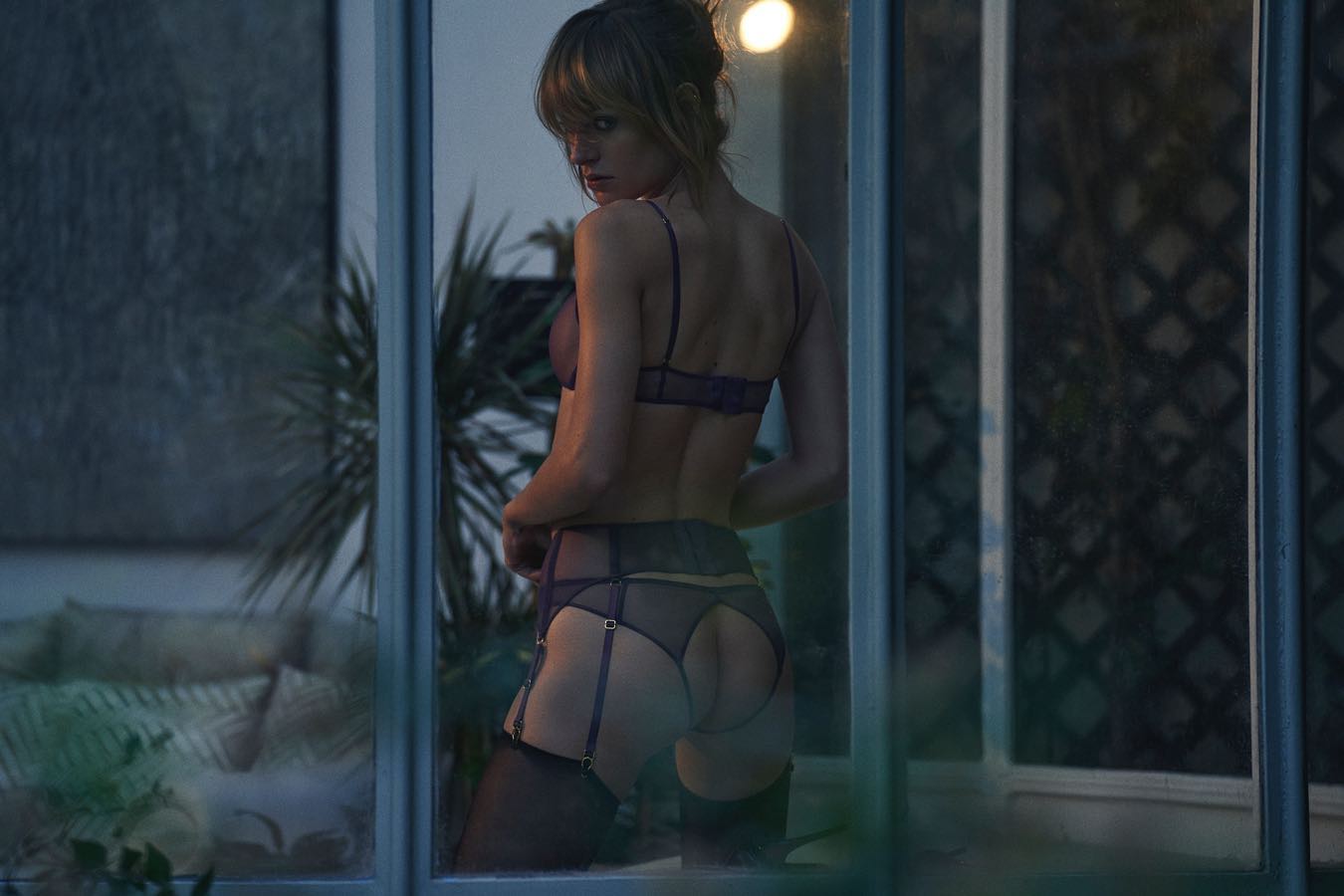
Handpicked Lingerie Brands for Boudoir Photography
Blog - August 18, 2022
Everyday Wear: Embracing Authenticity and Relatability
Contrary to the traditional view of boudoir attire, incorporating everyday clothing can bring a powerful and relatable dimension to the photograph. A simple oversized sweater, a favorite t-shirt, or a pair of well-loved jeans can make a statement, infusing the image with realism and a sense of personal identity. This approach often resonates with a sense of authenticity, comfort, and genuine self-expression, allowing the subject to connect with the viewer on a more personal and relatable level.
Props and Accessories: Adding Layers of Meaning
The use of props and accessories in boudoir photography is a creative way to add depth and interest to the narrative. Items like scarves, jewelry, hats, or even books can be used to enhance the story being told. These elements can serve as extensions of the subject's personality, hinting at their interests, passions, or even fantasies. The careful selection of accessories can create a focal point or serve as symbolic elements, adding richness and complexity to the image. They can transform the setting, mood, and character, providing a more rounded and detailed portrayal of the subject.
6. The Setting: Crafting the Scene
In boudoir photography, the setting is far more than a mere backdrop; it is a vital component that contributes significantly to the mood, tone, and storytelling of the final image. The choice of environment plays a crucial role in shaping the narrative and aesthetic of the boudoir session. Whether it's the comfort of a home, the versatility of a studio, the raw beauty of nature or the vibrancy and adventurous spirit of urban areas, the setting is an integral part of the storytelling process in boudoir photography, deeply influencing the mood, tone, and overall impact of the images.
Home Settings: Intimacy and Personal Connection
Utilizing a personal space like a bedroom for a boudoir session brings an unparalleled level of intimacy and authenticity to the images. These familiar surroundings often help the subject feel more comfortable and relaxed, allowing their true personality to shine through. A bedroom, with its personal artifacts and lived-in feel, tells a story about the subject, adding a layer of narrative depth. The soft textures of bedding, the play of light through curtains, and the presence of personal items create a setting that is not only intimate but also rich in storytelling potential.
Studio Settings: Controlled Creativity
A studio setting offers a different appeal – control and precision. Here, every element, from lighting to backdrops, can be manipulated to achieve a specific vision. This controlled environment allows for creative experimentation with different themes, moods, and styles. The use of various props, lighting setups, and backdrops can transform a studio space into whatever the narrative requires, from a minimalist, modern look to a more elaborate, thematic scene. The studio is a blank canvas, offering endless possibilities for creative expression.
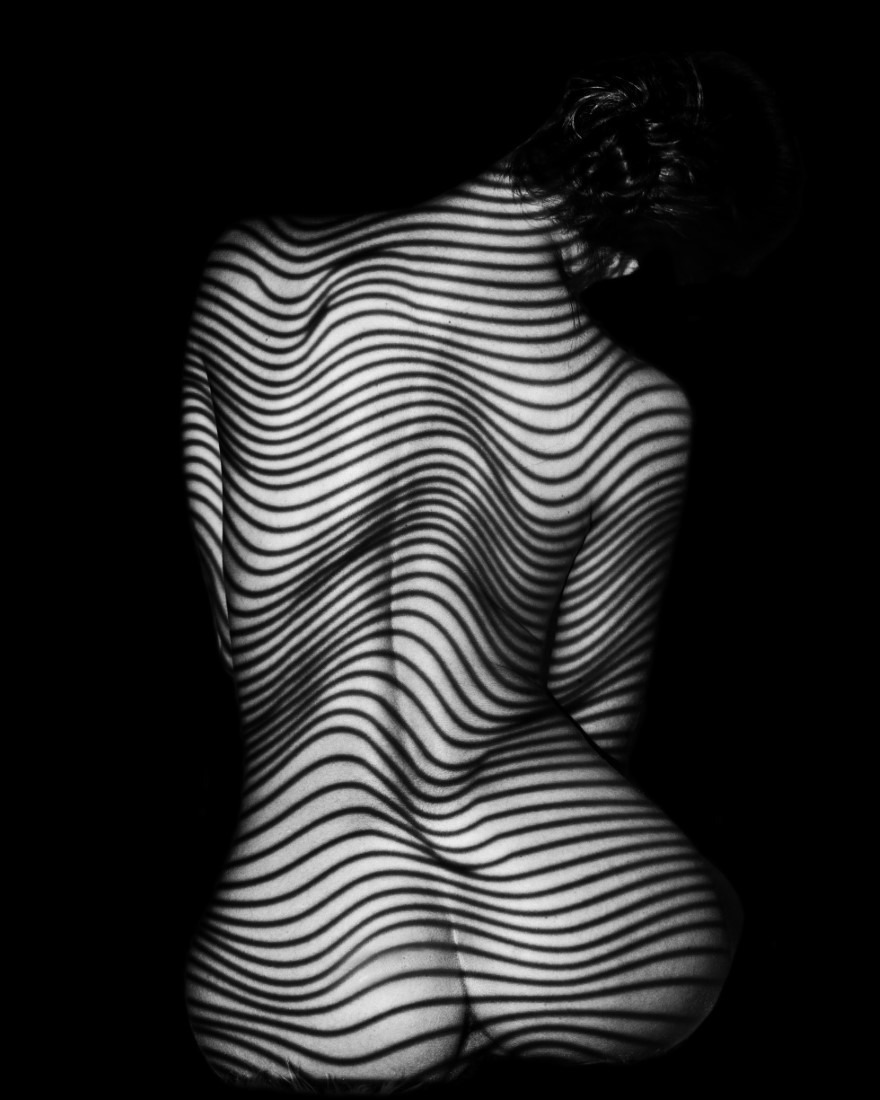
Artistry in Boudoir Photography: Creating Emotions with Interesting Light Textures
Blog - February 6, 2024
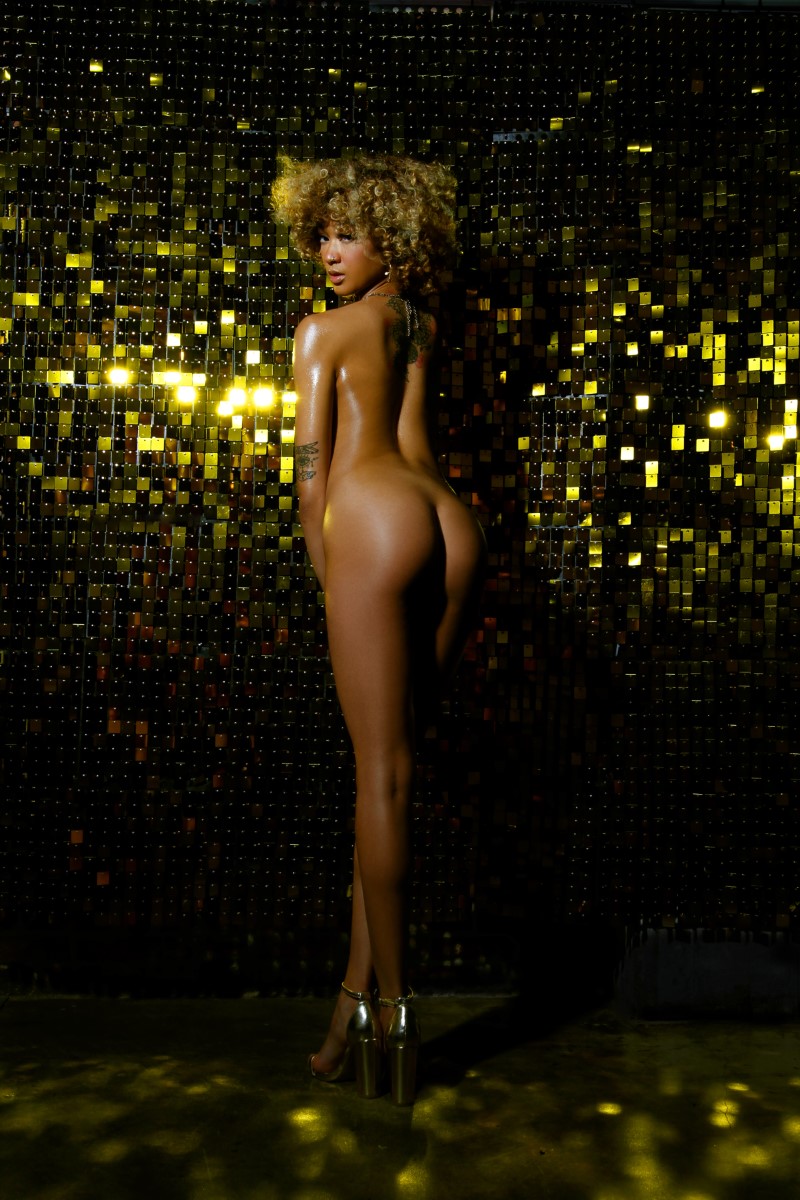
The Art of Mastering Boudoir Poses in a Photo Studio: An Insightful Guide
Blog - February 3, 2024
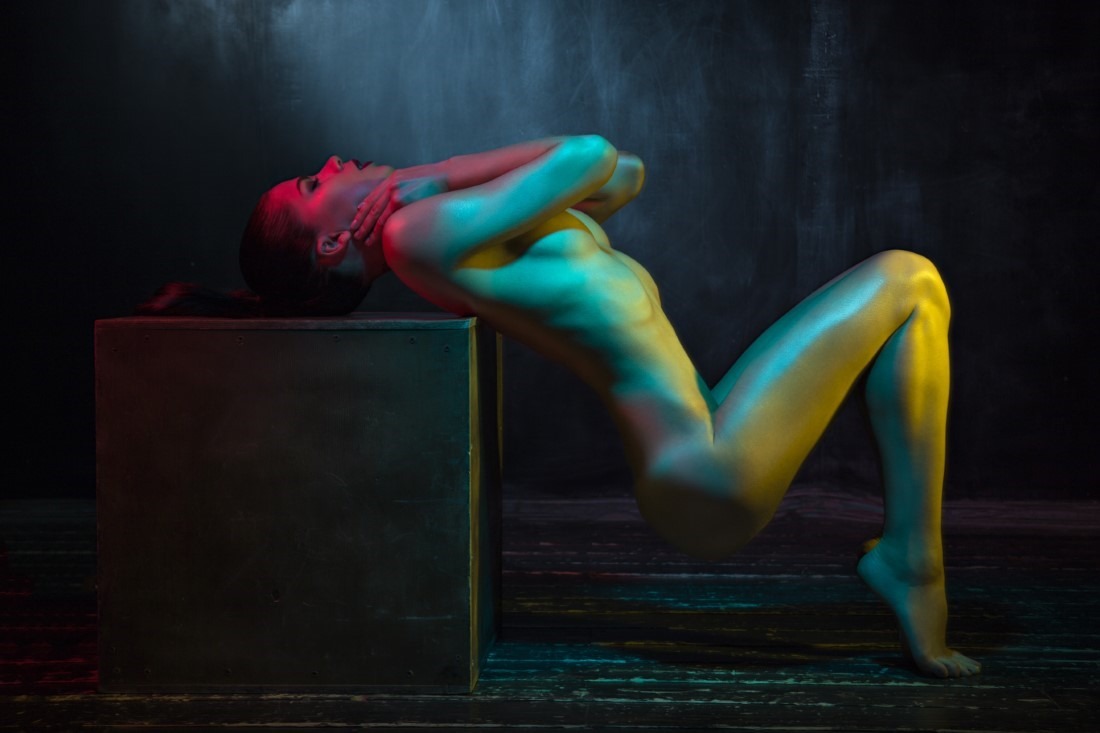
Unveiling the Magic of Colorful Lighting in Boudoir Photography
Blog - December 12, 2023
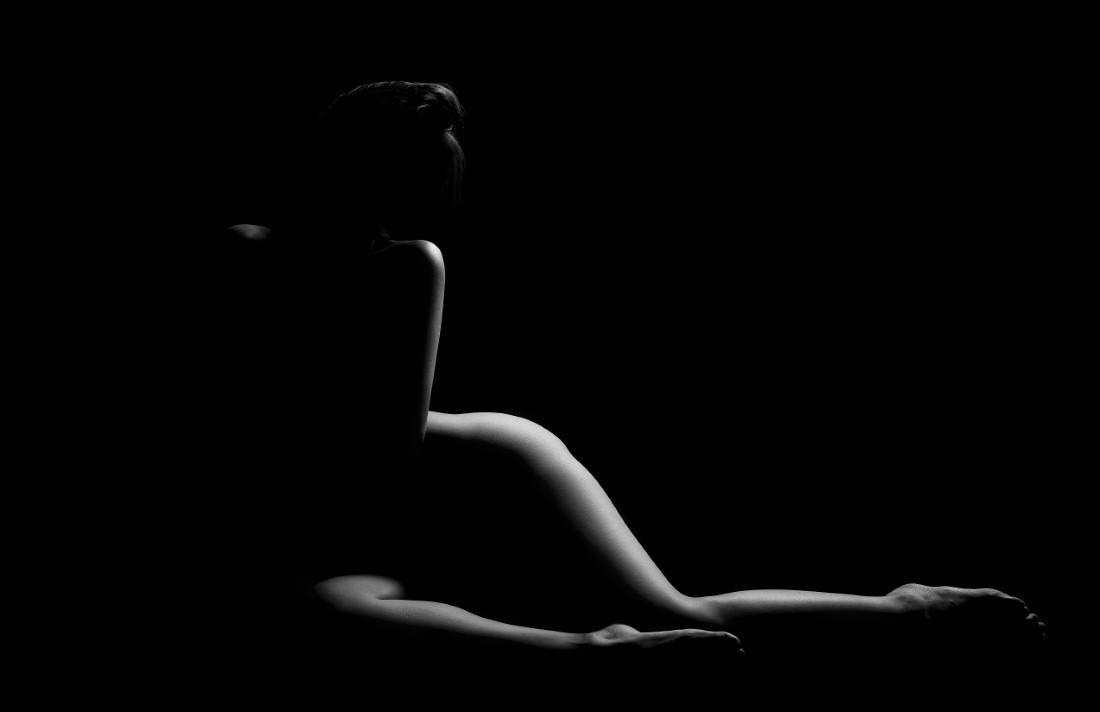
Low Key Fine Art Nude Photography
Blog - August 6, 2022
Outdoor Locations: Breaking Boundaries
In boudoir photography, outdoor locations bring a vivid and diverse palette to the art form, each setting offering its unique narrative and aesthetic. The untamed beauty of nature, with its forests and meadows, provides a backdrop of serene and mystical allure, where natural light dances through leaves, creating a play of shadow and light on the subject. The seaside, with its expansive views of water and sky, adds a sense of freedom and raw beauty, the rhythmic sound of waves complementing the shoot's tranquil yet powerful mood. Urban areas, with their blend of architecture, graffiti, and bustling streets, infuse a contemporary, edgy vibe, offering a stark contrast to the softness typically associated with boudoir. Abandoned places, with their aura of forgotten stories and decaying beauty, create a unique, almost surreal setting, adding layers of intrigue and a sense of timelessness. Each of these outdoor locations enriches the boudoir experience, breaking traditional boundaries and adding depth and character to the photographic narrative.
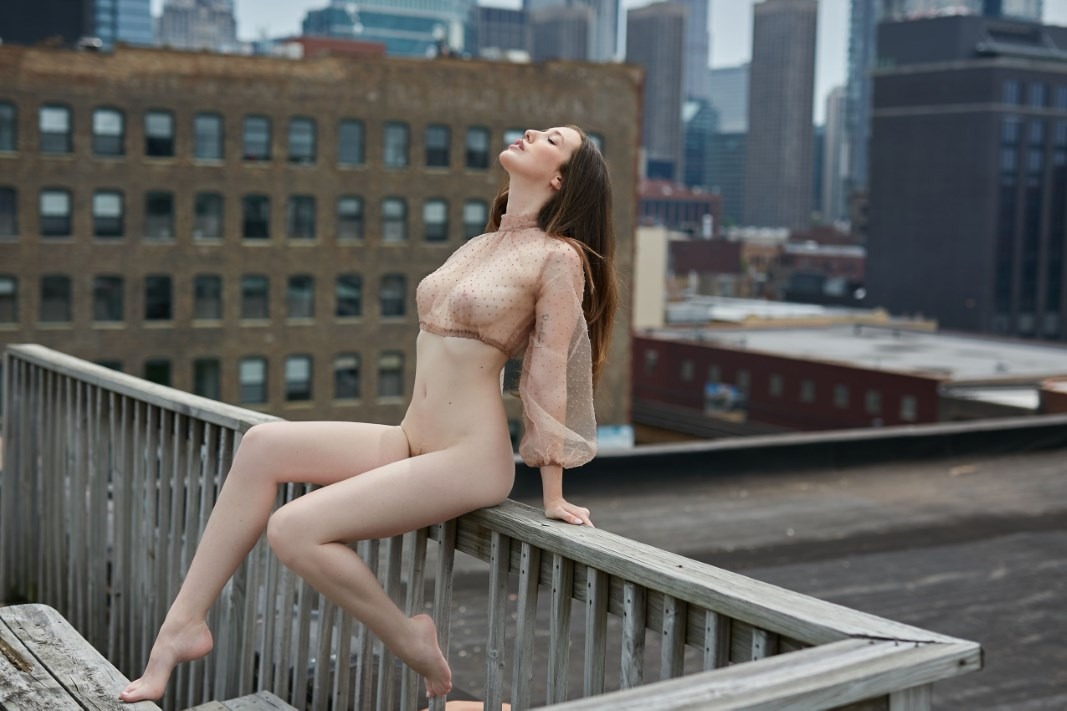
Outdoor Boudoir Photography
Blog - December 3, 2023
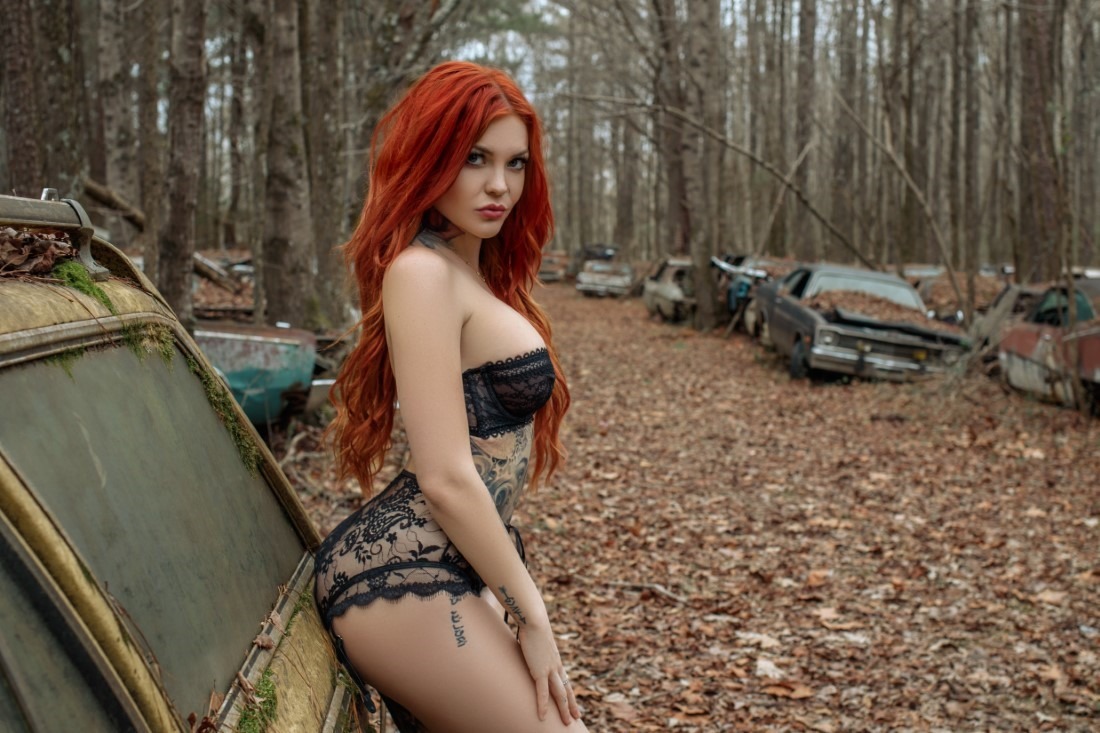
Boudoir Photography in Industrial / Abandoned Places: A Fusion of Raw Beauty and Forgotten Spaces
Blog - November 23, 2023
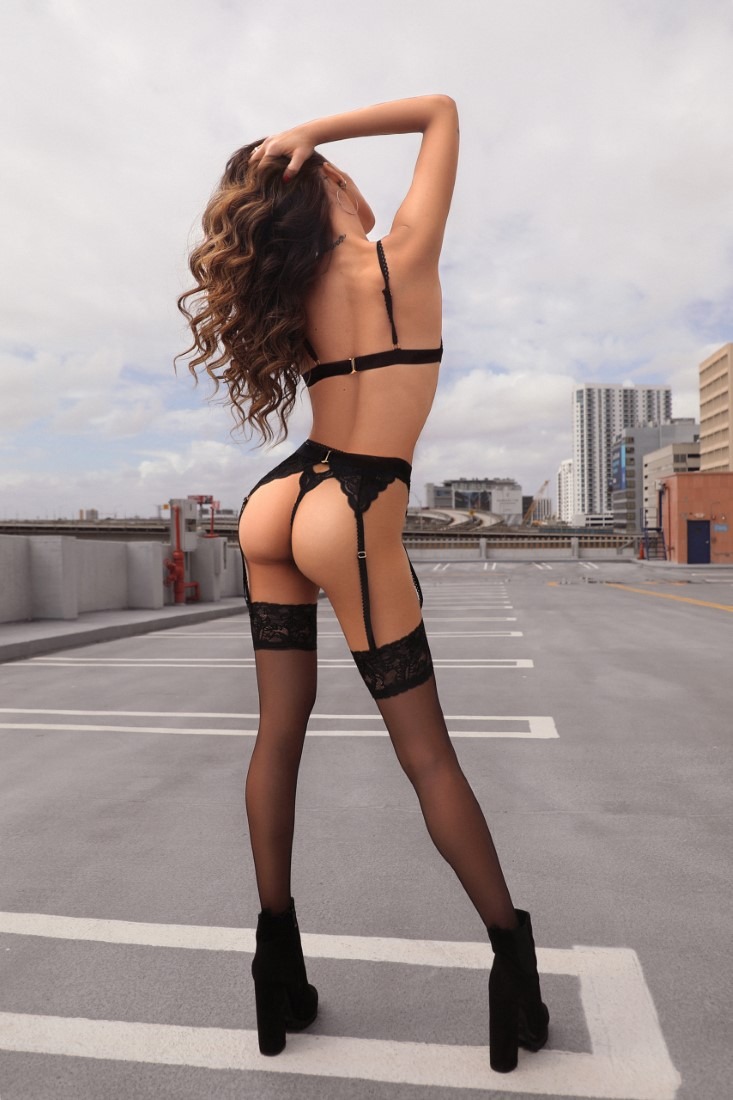
Urban Boudoir Photography: Capturing the City Vibe
Blog, Feed - November 20, 2023
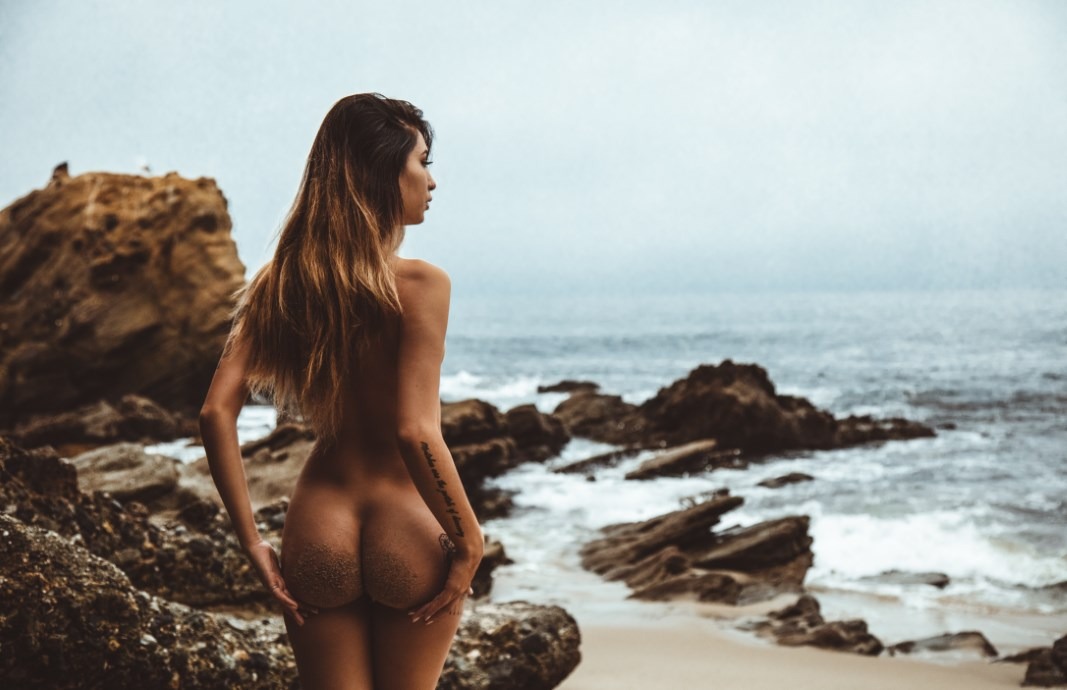
Seaside & Beach Boudoir Photography
Blog - November 5, 2022
7. Post-Processing: The Final Touch
In boudoir photography, the journey of creating art extends beyond the moment of capture, finding its completion in the nuanced process of post-processing. This stage is critical, as it's where the photographer's unique vision and style come to life, transforming raw images into polished works of art.
Editing Style: Crafting the Visual Tone
The editing style chosen by the photographer plays a pivotal role in defining the overall look and feel of the boudoir images. This can range from a preference for a natural, understated aesthetic that stays true to the original shot, to a more dramatic approach that emphasizes high contrast and bold colors. The choice of editing style is a reflection of the photographer's artistic voice, significantly influencing how the final image communicates its narrative and evokes emotion.
Retouching: Balancing Authenticity and Artistry
Retouching is another aspect of post-processing where the approach can vary greatly among photographers. Some opt for minimal retouching, striving to maintain the authenticity and raw beauty of the subject. This approach often focuses on subtle enhancements rather than significant alterations, preserving the natural essence of the image. On the other hand, more extensive retouching can be employed to refine the mood, draw focus to certain elements, or create a more stylized visual. The level of retouching is a delicate balance between maintaining the integrity of the original image and enhancing it to reflect the envisioned artistic concept.
Color Grading: Setting the Photographic Mood
Color grading is the final, yet crucial, step in post-processing. It involves adjusting the color tones to set the overall mood of the photograph. Whether it's achieving a vintage feel with muted, desaturated colors or creating a contemporary look with vibrant and high-contrast hues, color grading is instrumental in conveying the desired atmosphere. It's a powerful tool that can transform the visual narrative, adding depth, emotion, and a sense of cohesiveness to the collection of images.
Advancements in AI technology have significantly simplified tasks like color matching and color grading in photography. A notable example is the innovative tool offered by Retouch4me, one of our esteemed sponsors for the Boudoir Photography Awards 2023. We highly recommend checking out their impressive color matching solution for these needs.
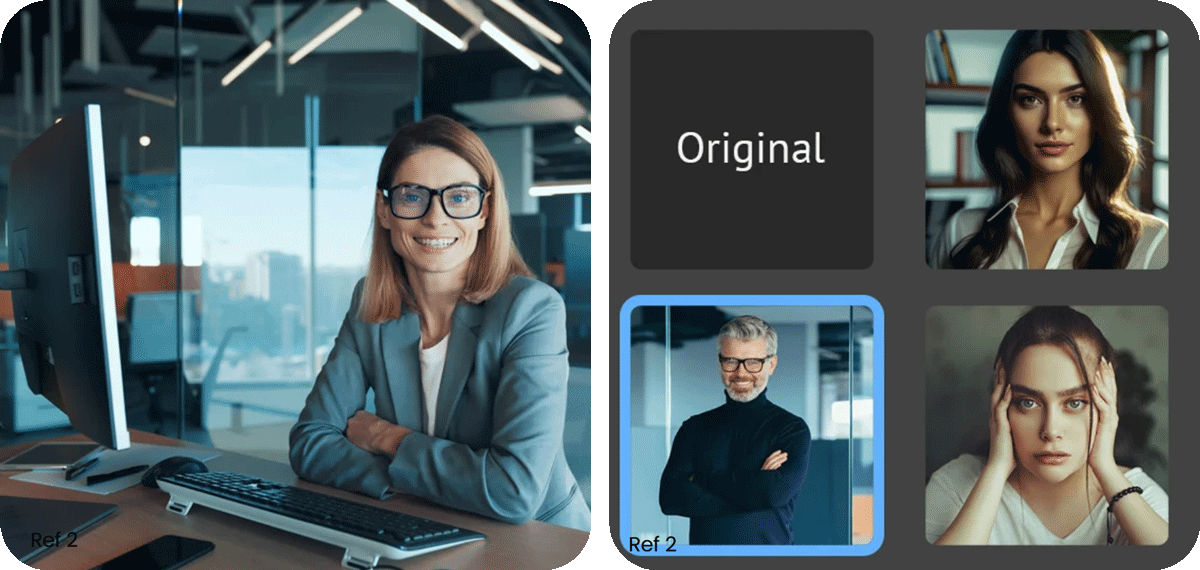
Certainly, it's important to note that color matching and color grading are distinct processes. Adobe offers an insightful article that delves into this topic. While the article primarily focuses on video, the underlying principles are equally applicable to photography. Do take a moment to explore it for a deeper understanding.
Through these post-processing techniques, the art of boudoir photography reaches its full expression, with each step carefully executed to bring the photographer's artistic vision to fruition.
8. The Narrative: Story Telling Through Images
In the world of boudoir photography, every session is an opportunity to tell a distinct and personal story through images. The photographer plays a crucial role in this storytelling process, meticulously weaving a narrative that captures the essence of the subject's individuality and emotional journey.
Pre-Session Consultation: Uncovering the Storyline
The narrative begins to take shape even before the camera is in hand, during the pre-session consultation. This is a critical phase where the photographer engages with the subject to understand their motivations, desires, and the personal story they wish to convey through the session. This understanding is key to crafting a personalized and meaningful narrative that aligns with the subject's vision and emotional core.
The Shoot: Capturing the Essence
During the shoot, the photographer becomes the storyteller, guiding the narrative with each click of the shutter. This phase is about more than just technical skill; it's about capturing those candid moments that reflect the subject's personality, emotions, and the journey they are on. The photographer's sensitivity to mood, atmosphere, and the subject's comfort levels plays a vital role in bringing out authentic expressions and poses that resonate with the subject's story.
The Reveal: Visual Storytelling
When the final images are presented, they should coalesce into a cohesive and compelling narrative that deeply resonates with the subject. Each photograph is a chapter of a larger story, revealing different facets of the subject's personality and journey. The reveal is more than just a viewing of images; it's the culmination of a shared experience between the photographer and the subject, a visual representation of the subject's narrative brought to life through the art of boudoir photography. This narrative approach not only enhances the depth and richness of the images but also creates a more meaningful and personalized experience for the subject.
9. The Role of Confidence and Trust in Boudoir Photography
In the delicate art of boudoir photography, the relationship between the photographer and the subject is deeply rooted in confidence and trust. This bond is not just a professional courtesy; it's an essential artistic element that significantly influences the outcome of the photography session.
Building Rapport: Creating a Comfortable Space
The process of building rapport is a critical first step for any boudoir photographer. This involves more than just technical preparations; it's about establishing a connection that makes the subject feel both comfortable and confident. A good photographer takes the time to understand their subject, engaging in conversations that transcend the superficial. This rapport-building phase is crucial as it helps in breaking down barriers, allowing the subject to feel at ease, which is reflected in the naturalness and authenticity of the photographs.
Guidance: Nurturing the Photographic Journey
Many individuals who step into a boudoir photography session are not professional models and may be unfamiliar with posing or expressing themselves in front of the camera. In this context, the photographer's role extends to providing gentle guidance. This guidance is about suggesting poses and expressions that not only look aesthetically pleasing but also resonate with the subject's personality. It's a nurturing process, where the photographer helps the subject find comfort in vulnerability, turning apprehension into elegance and grace.
Positive Reinforcement: Fostering Self-Confidence
Throughout the session, positive reinforcement plays a significant role in boosting the subject's confidence. Encouragement and affirmative feedback can transform the photography experience, empowering the subject. When subjects feel confident, it shines through in the photographs, capturing a sense of strength and self-assuredness. This positive environment encourages subjects to embrace their individuality, resulting in images that are both beautiful and genuinely representative of their persona. In boudoir photography, such an atmosphere of trust and confidence is not just beneficial; it's essential for creating art that is as authentic as it is striking.
10. The Artistic Impact of Boudoir Photography
Boudoir photography, often perceived as a mere genre of photography, holds a much deeper significance for those who experience it. This form of artistry extends beyond the camera, leaving a lasting impact on the participants.
Boosting Self-Esteem Through Artistic Expression
One of the most notable effects of boudoir photography is its ability to enhance self-esteem and body image. For many, seeing themselves captured through this unique and artistic lens can be a revelatory experience. It allows individuals to view themselves in a new light, often leading to a newfound appreciation and acceptance of their bodies. This form of photography celebrates the diversity of bodies, helping to dismantle the often unrealistic standards set by mainstream media. The experience of being photographed in such an intimate and positive manner can significantly alter one's perception of their physical self, leading to a boost in confidence and self-worth.
Empowerment in a Safe and Respectful Environment
Boudoir photography also serves as a powerful tool for empowerment. It provides a space where individuals can freely express their sexuality and embrace their self-image without judgment. In the safe and respectful environment created by a professional photographer, participants can explore aspects of their identity and express themselves in ways they may not have felt comfortable doing before. This empowerment is not just about sexuality; it's about owning one's body and self-image, and feeling confident and comfortable in one's skin.
Healing Through Photographic Art
For some, boudoir photography is more than an empowering experience; it's a part of their healing journey. Particularly for those who have undergone significant life changes such as childbirth, surgery, or overcoming illness, a boudoir session can be a way to reconnect with and celebrate their bodies. It can be a powerful medium to acknowledge and appreciate the changes and challenges one's body has gone through, fostering a sense of healing and acceptance. This aspect of boudoir photography underscores its role not just as an art form, but as a therapeutic tool that can aid in personal growth and recovery.
Artistic Exploration and Creative Expression
Lastly, boudoir photography offers a platform for artistic exploration and creative expression. It allows both the photographer and the subject to experiment with different styles, themes, and aesthetics. This exploration can be a journey of self-discovery for the subject, as they become a part of creating something that is artistically unique and personal. For the photographer, it's an opportunity to push creative boundaries, experiment with lighting, composition, and styling to create images that are not only personally meaningful but also artistically compelling. This facet of boudoir photography underscores its value as a form of artistic expression, where the human body and emotion are the canvases for creating impactful art.
11. The Evolution of Boudoir Photography as an Art Form
Boudoir photography, as an art form, has undergone significant transformation, continually shaped by cultural dynamics and technological progress. This genre of photography, once limited in scope and style, now embraces a broader, more inclusive perspective.
Embracing Diversity in Representation
A notable shift in boudoir photography is the increasing focus on diverse representation. Modern boudoir photography actively celebrates bodies of all types, genders, and ethnicities, moving away from traditional norms that often favored a narrow, unrealistic standard of beauty. This change not only challenges societal norms but also empowers individuals from various backgrounds to see themselves as worthy of being celebrated in their unique beauty. The inclusion of diverse body types and identities in boudoir photography has been a significant step towards inclusivity, offering a more authentic and varied representation of beauty.
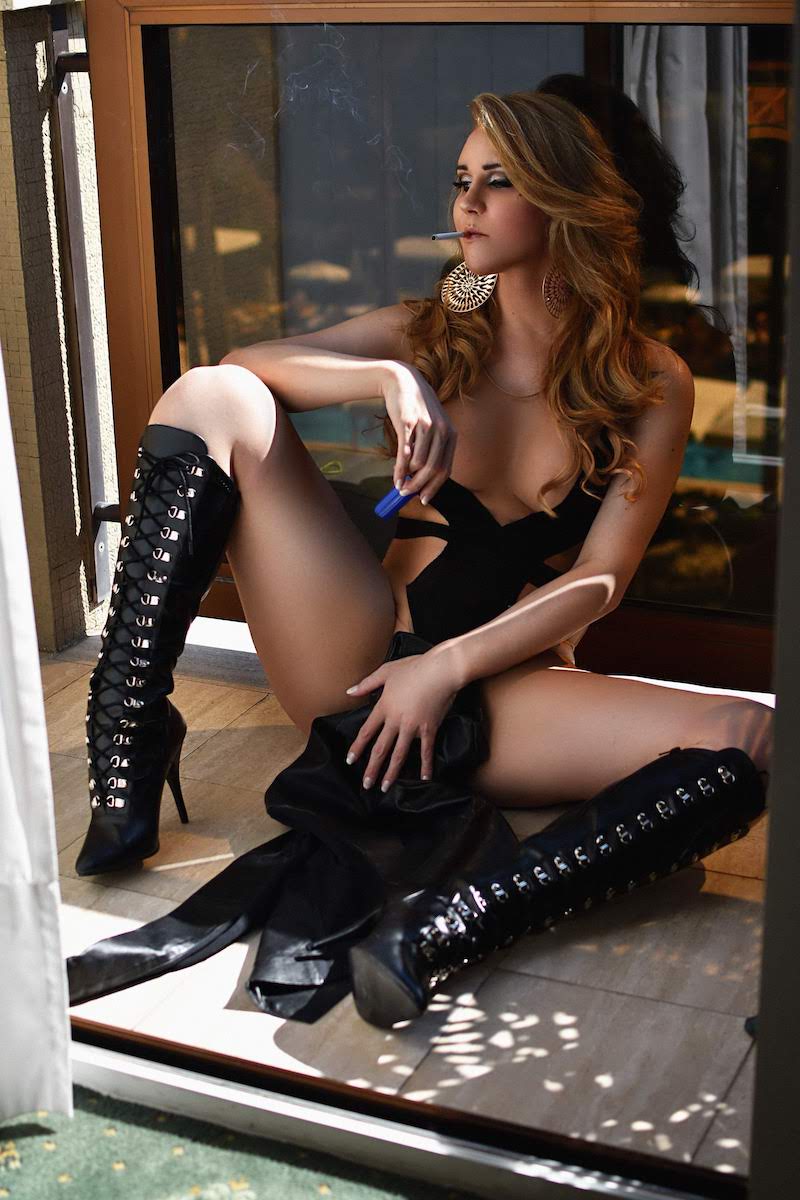
Mood Rings - Giselly Bella & Vinicius Pozzatti
September 2023 Boudoir Issue - October 15, 2023
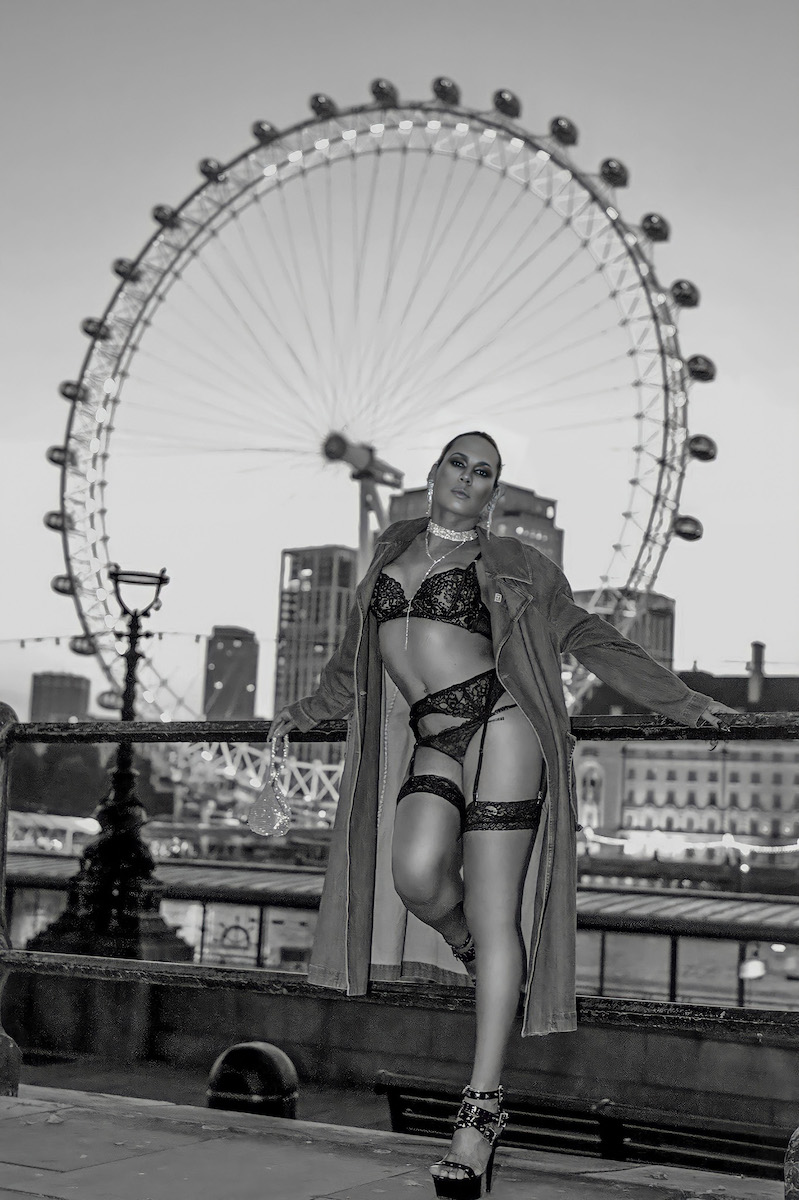
Body Language - Barbara Almeida & Vinicius Pozzatti
Webitorial - March 19, 2023
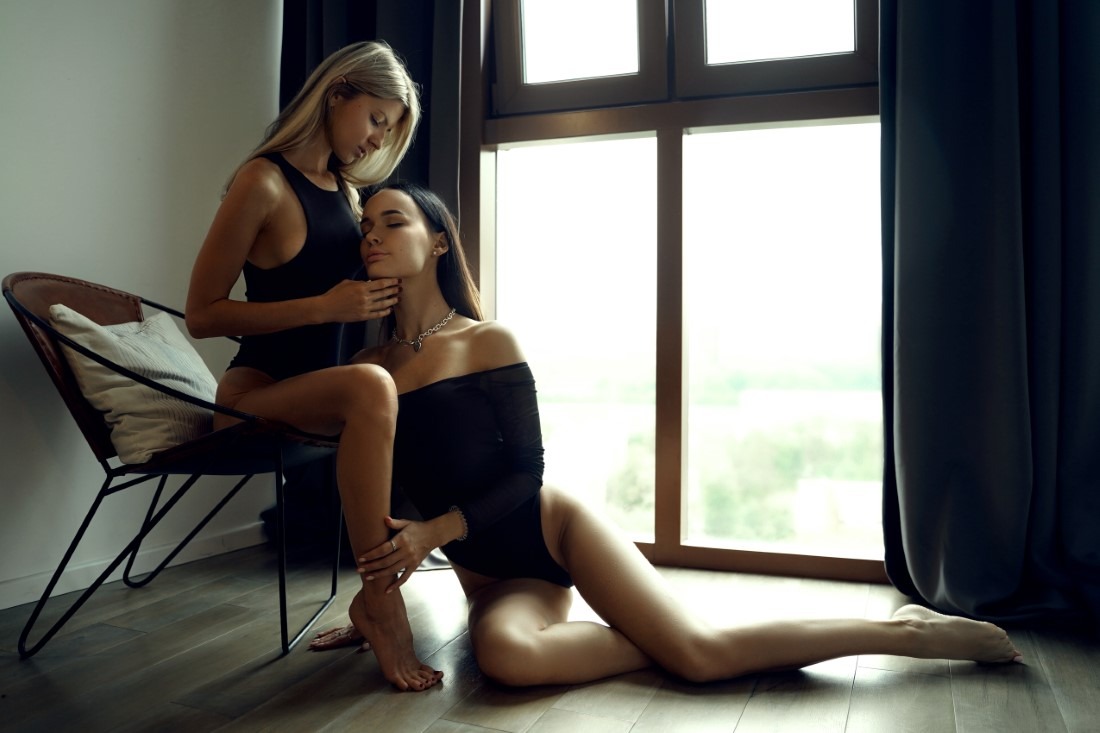
Together - Sasha & Valentina & Yulia Zhitkova
Video - December 27, 2021
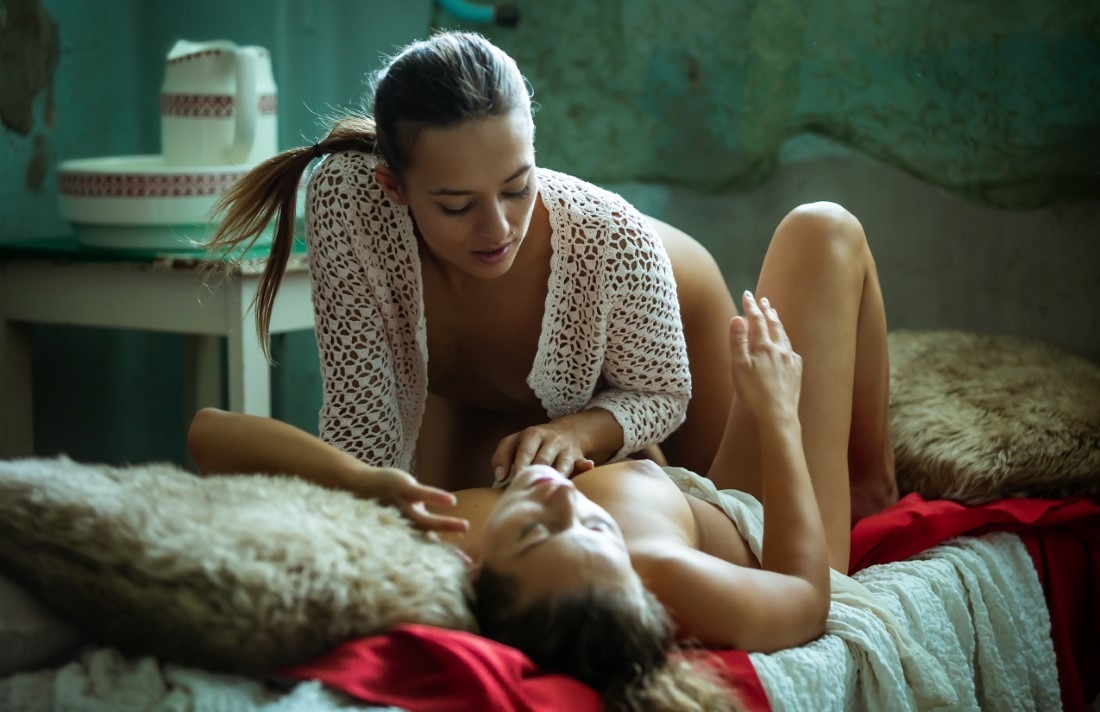
Witness Of Tender Moments - Roger Brunner
Valentines Day 2024 Couples Boudoir Issue, May 2021 Issue - June 18, 2021
Technological Advancements Enhancing Creativity
Technological advancements have also played a crucial role in the evolution of boudoir photography. The advent of new camera technologies and sophisticated editing software has expanded the creative horizons for photographers. These tools allow for greater experimentation with lighting, composition, and post-processing, enabling photographers to create images that are not only visually stunning but also artistically innovative. The digital age has brought about a democratization of photography, making it more accessible and providing photographers with more tools to express their artistic vision.
Cultural Shifts Influencing Artistic Expression
Furthermore, boudoir photography is evolving in response to changing societal attitudes towards body image and sexuality. As conversations around these topics become more open and progressive, boudoir photography reflects these changes. It has become a medium through which subjects can express their sexuality and body confidence in empowering ways. This shift is evident in the variety of styles and themes now present in boudoir photography, ranging from the subtly intimate to the boldly expressive. The genre is increasingly used as a form of personal and artistic expression, challenging and redefining traditional perceptions of sensuality and beauty.
Conclusion: The Artistic Beauty of Boudoir
Boudoir photography is a multifaceted art form that combines technical skill with a deep understanding of human emotion and beauty. It's about creating a safe space where subjects can explore and express themselves, resulting in images that are not only visually stunning but also emotionally resonant. Whether you're a photographer, a potential subject, or simply an admirer of the art form, the world of boudoir photography offers a rich tapestry of artistic expression to explore.
In conclusion, boudoir photography is much more than its surface perception. It's an intimate collaboration between photographer and subject, a celebration of individuality, and a testament to the beauty and complexity of the human form. Through understanding and utilizing various artistic elements, boudoir photography transcends mere imagery, becoming a powerful medium for personal expression and empowerment.

